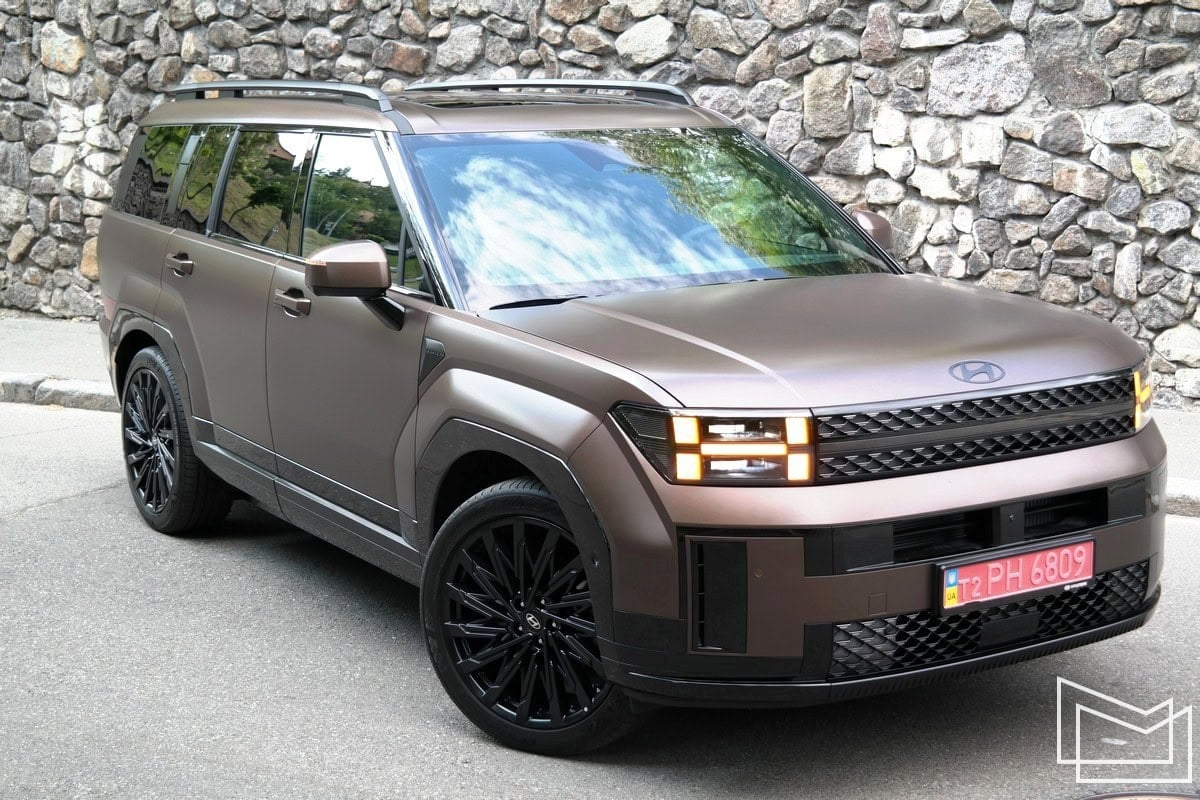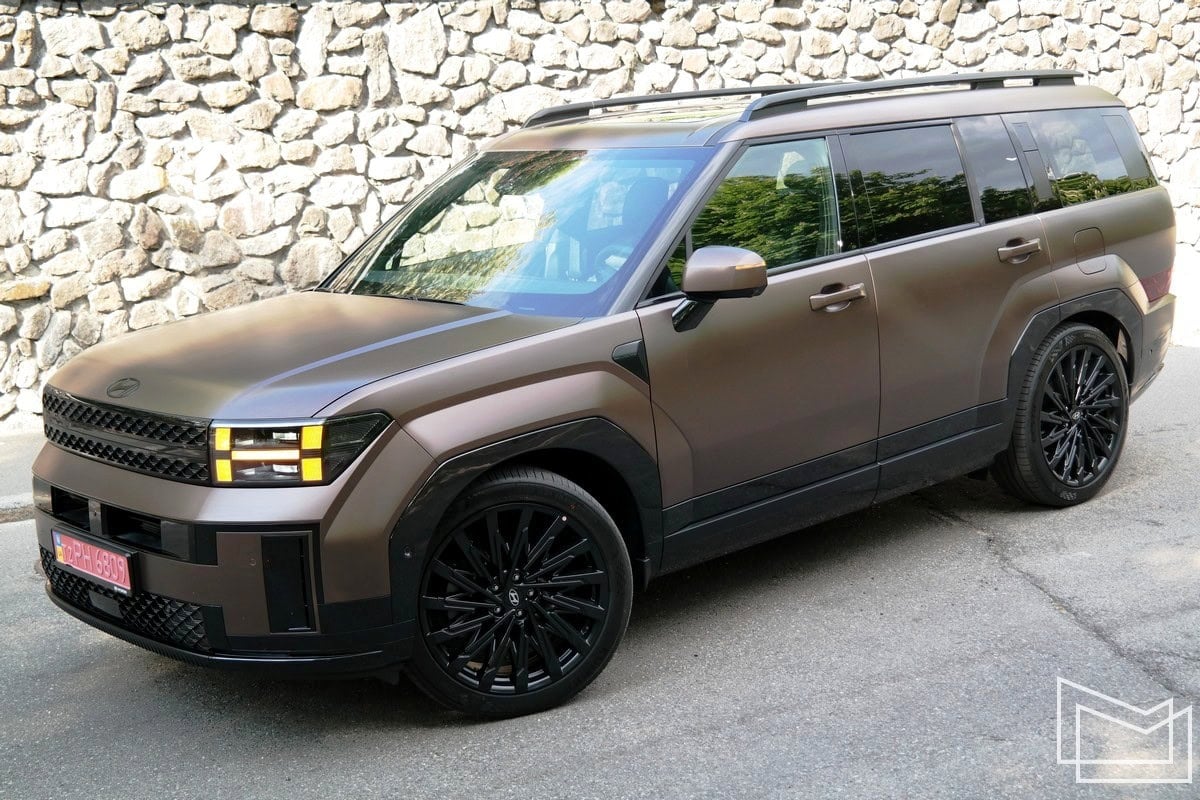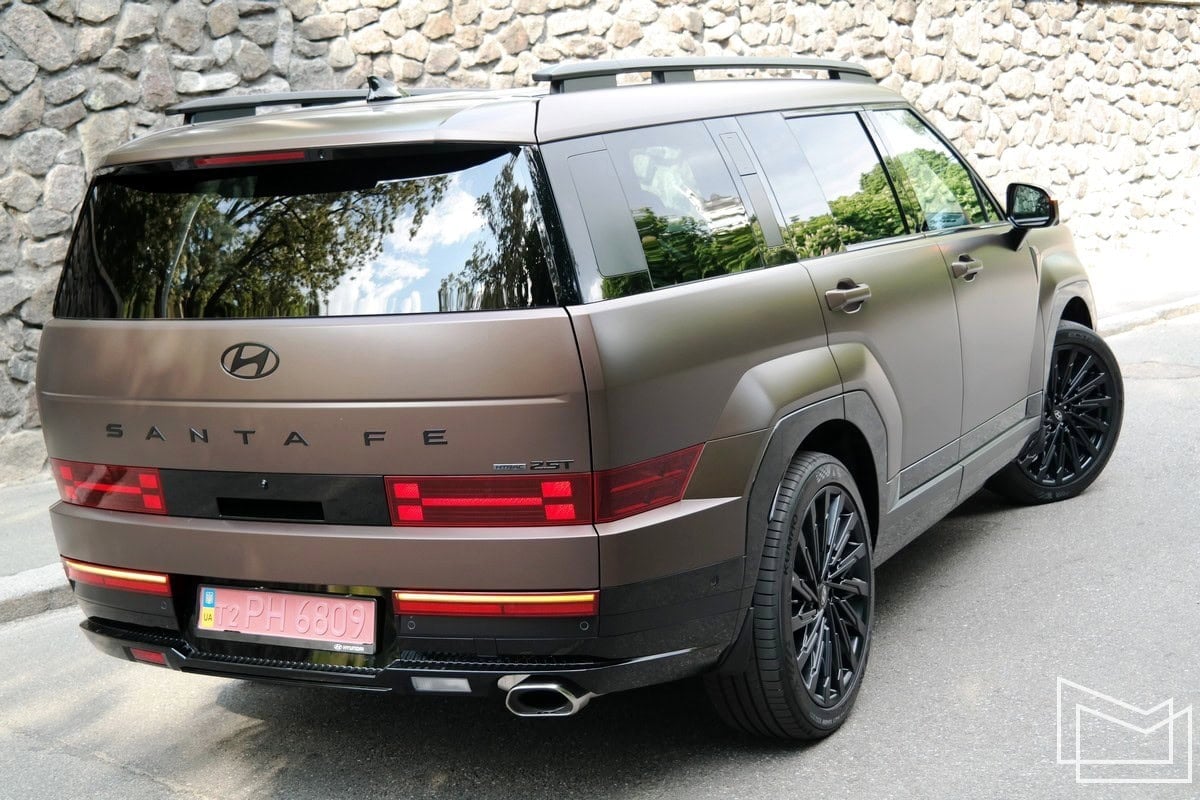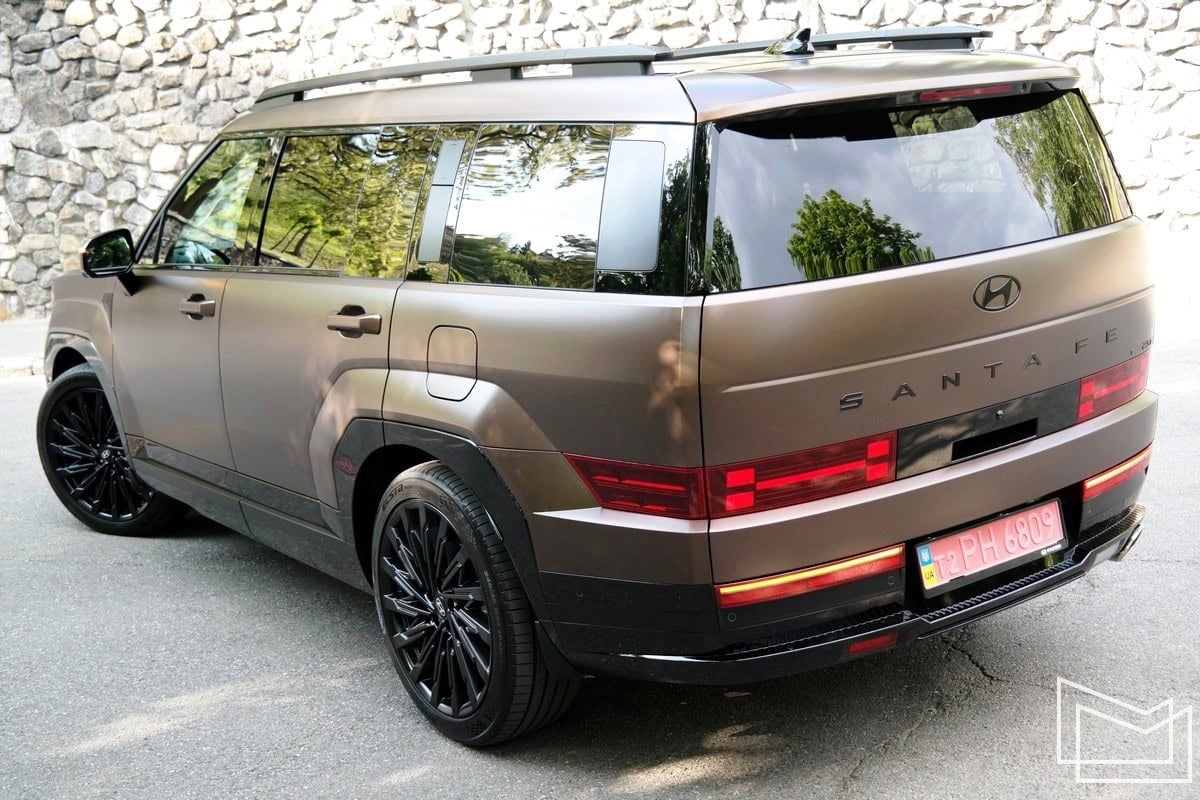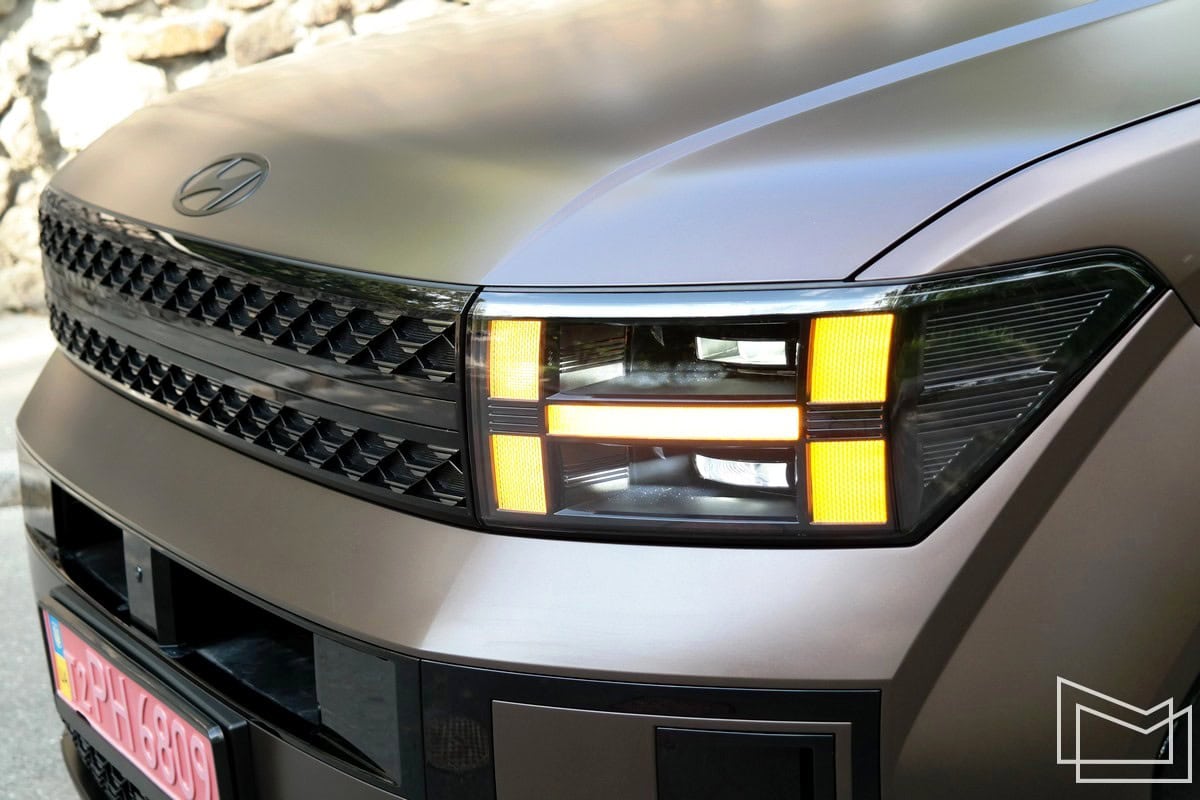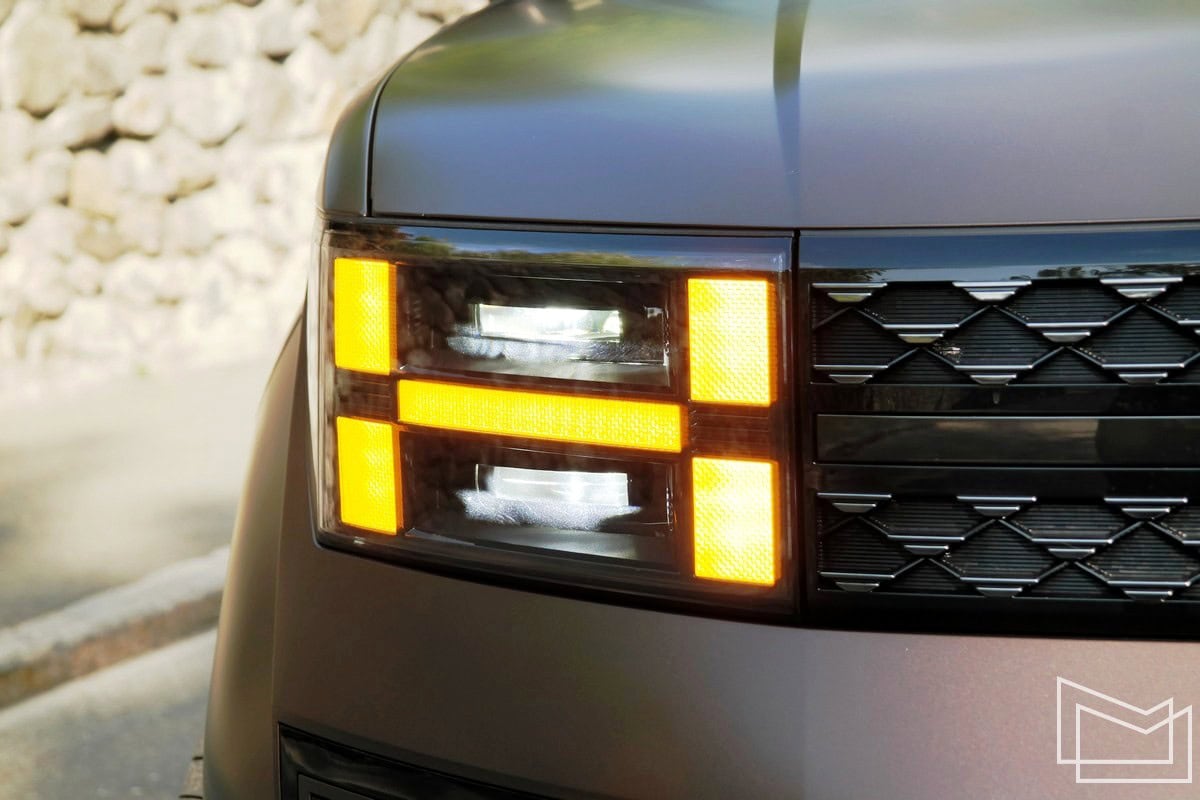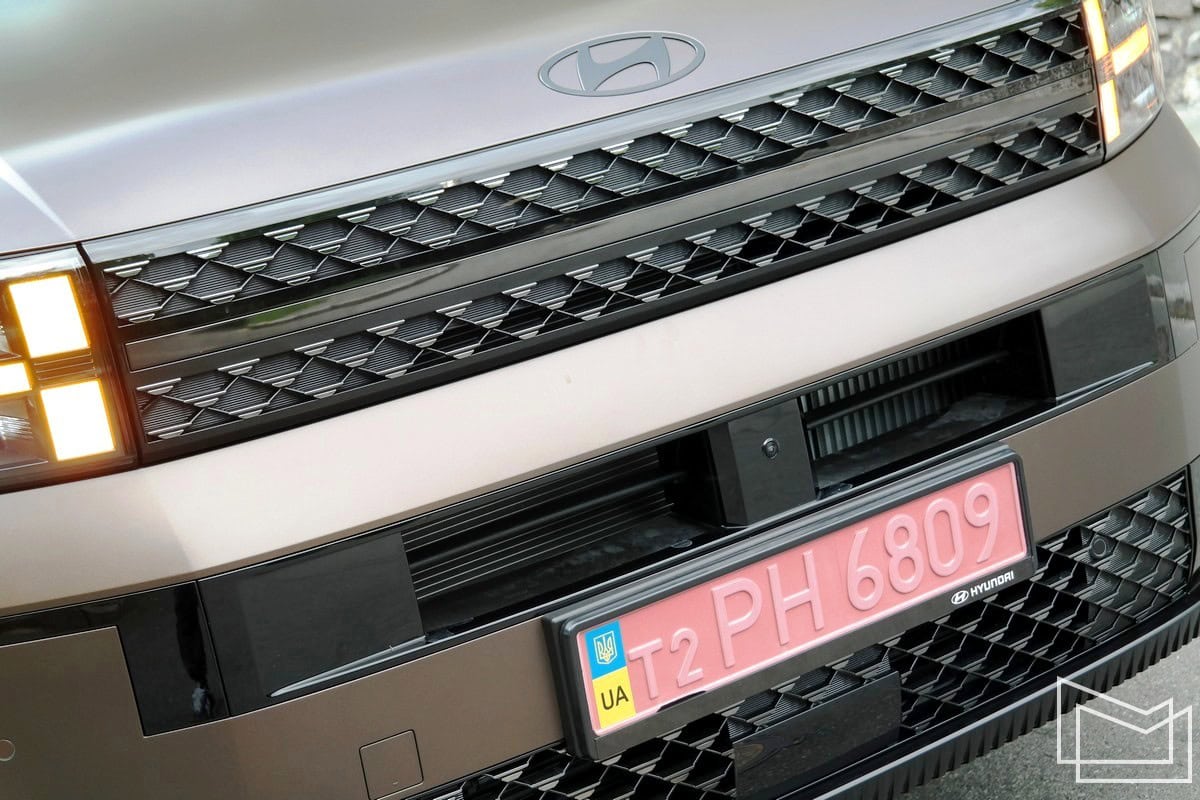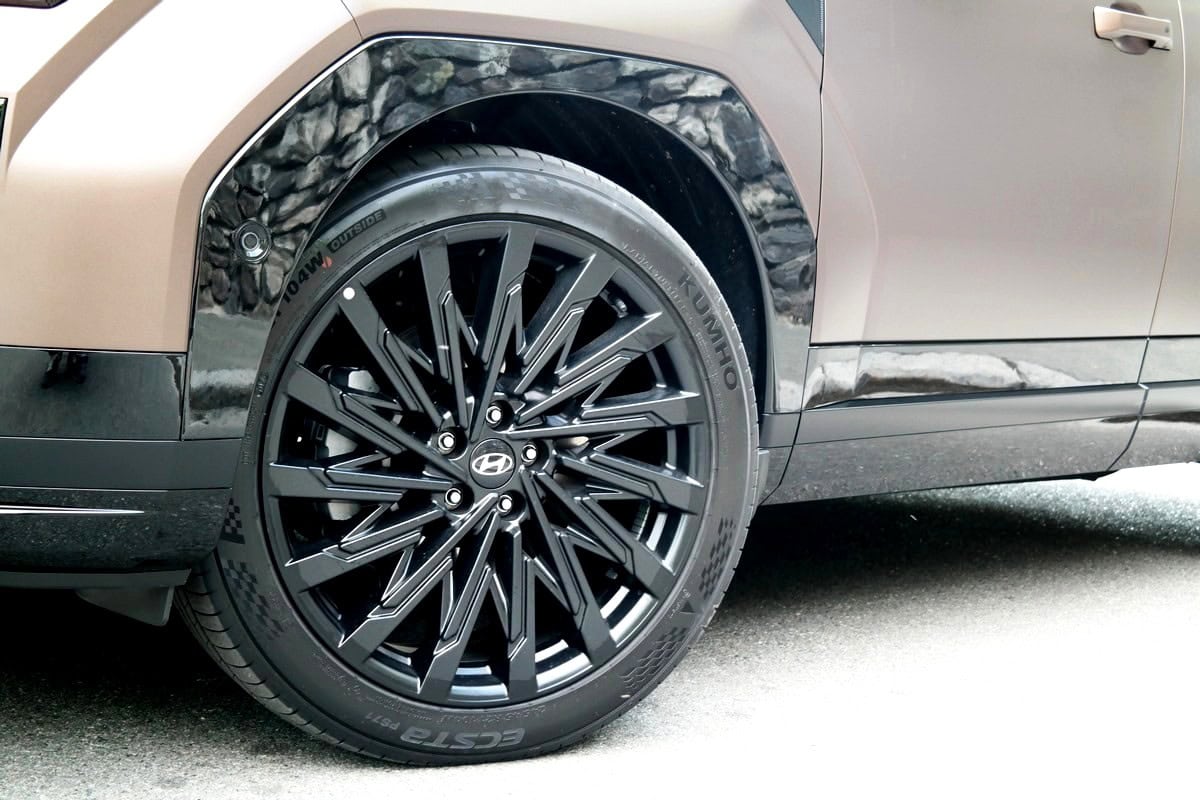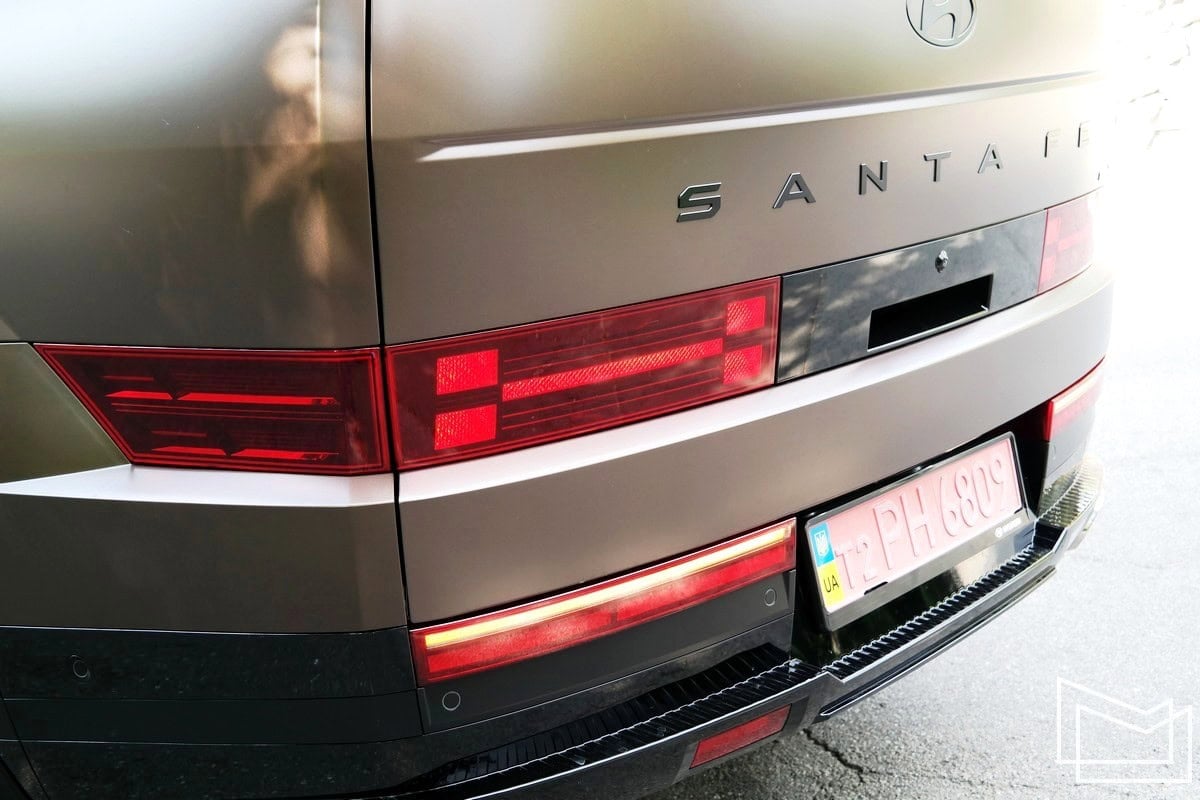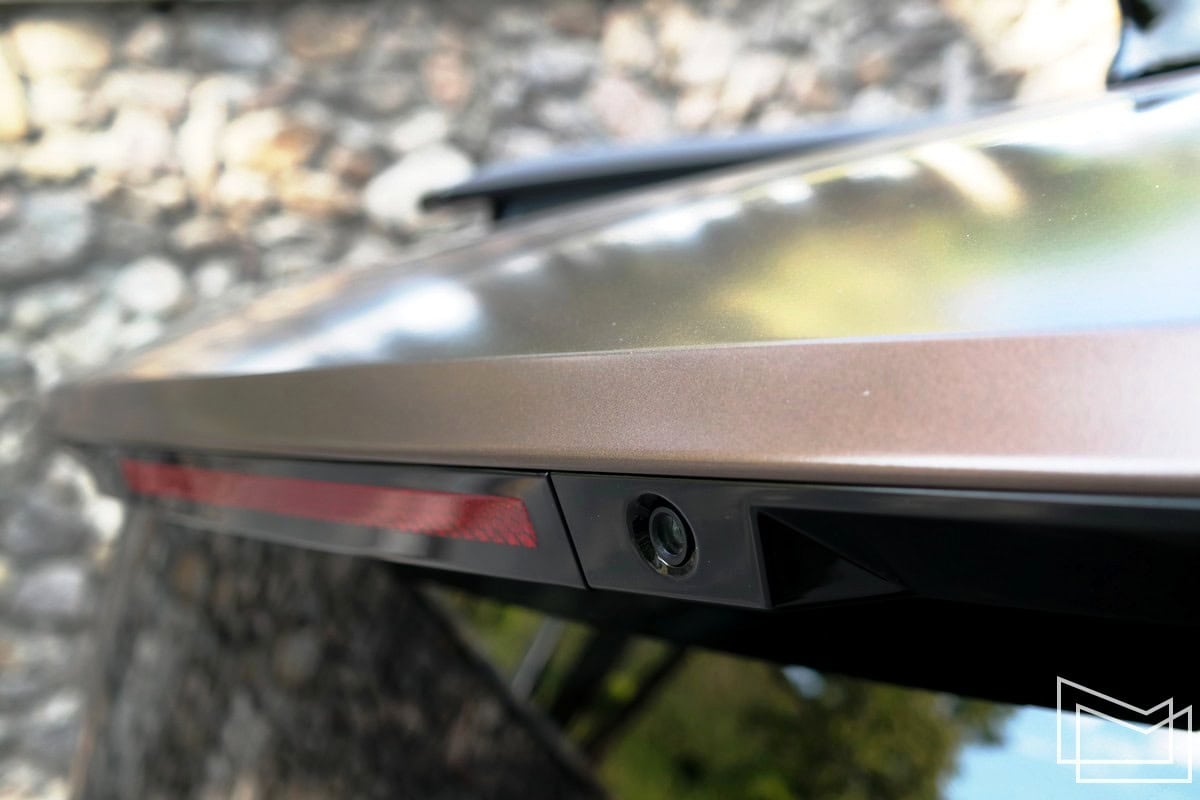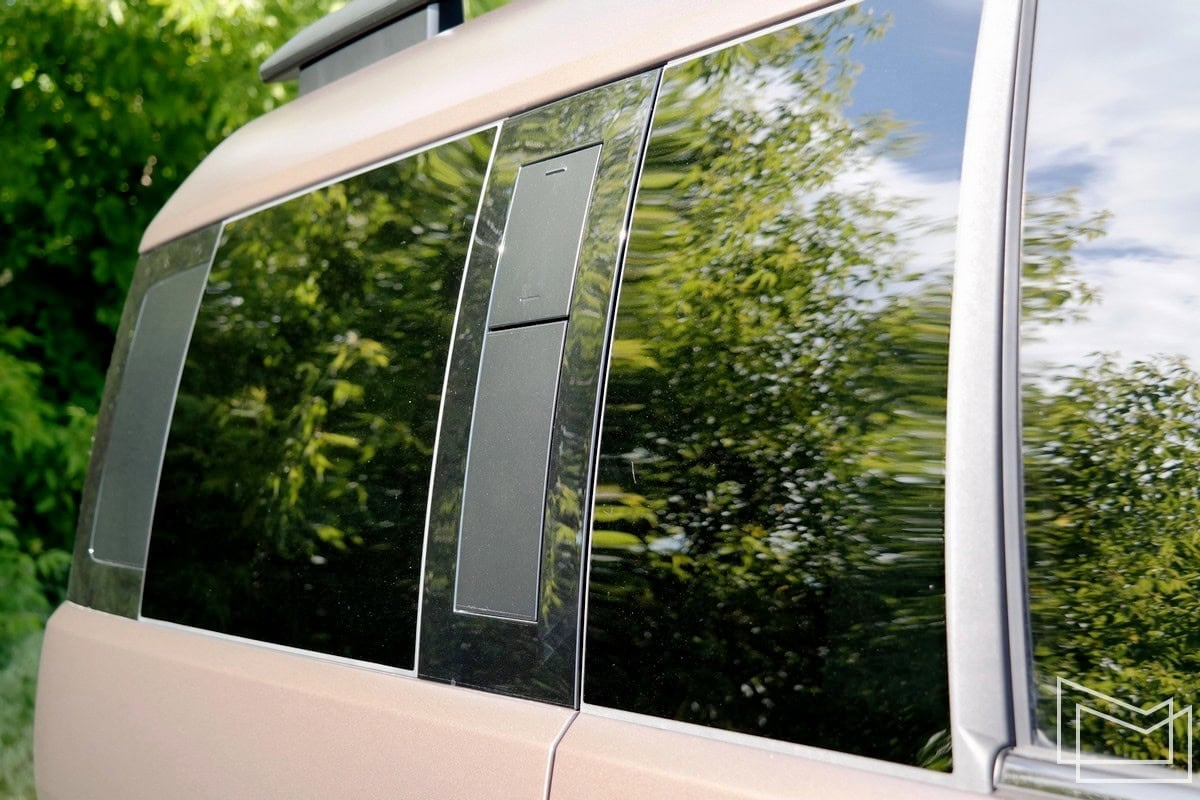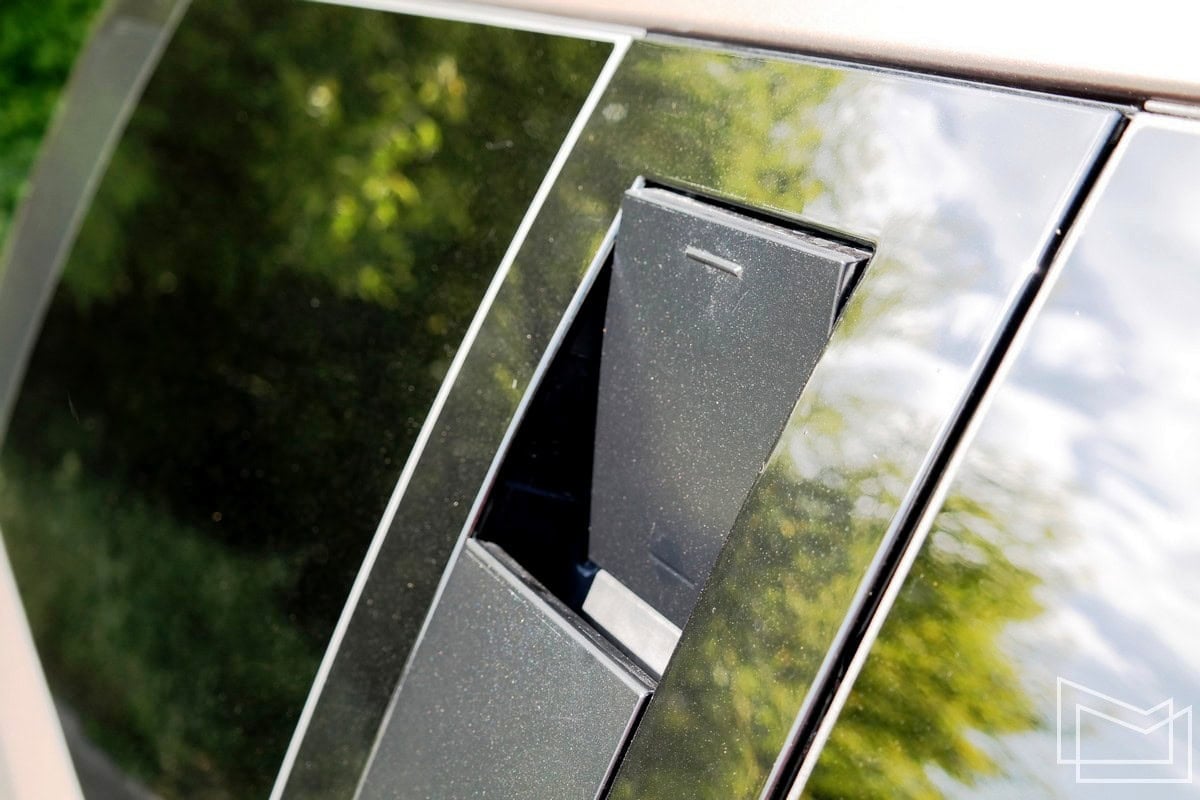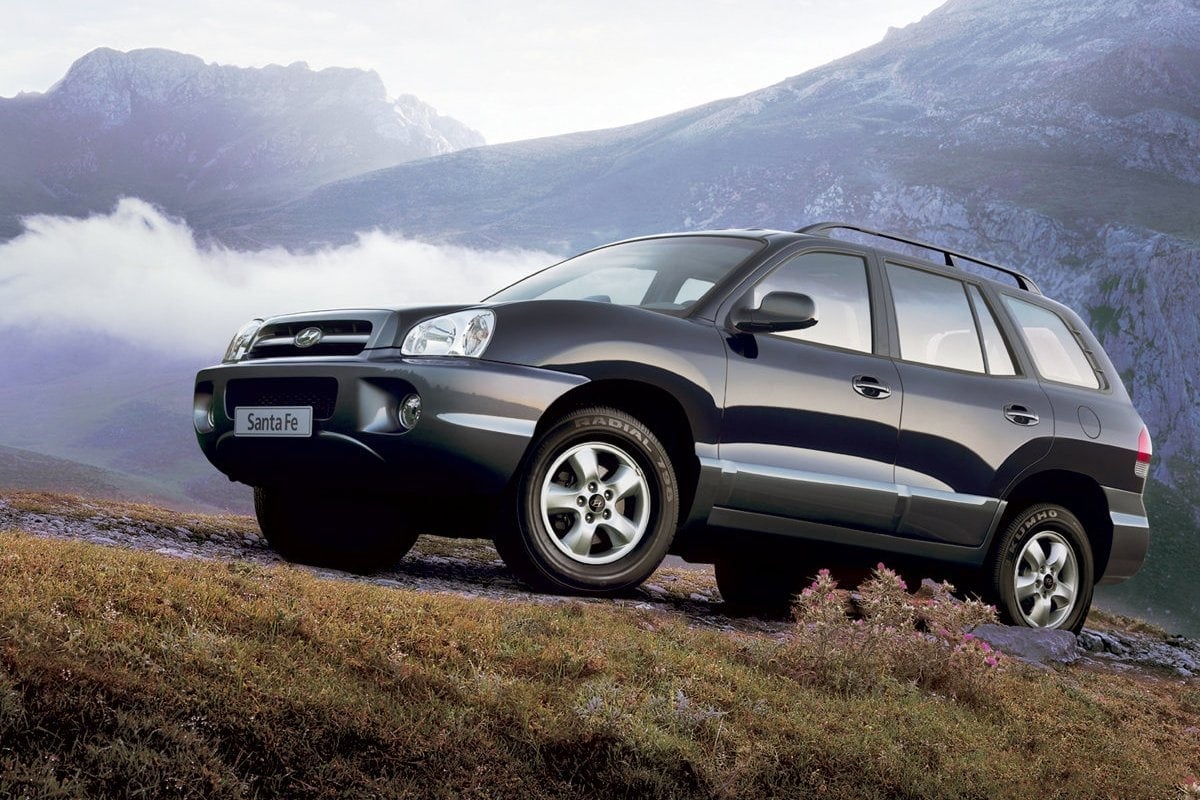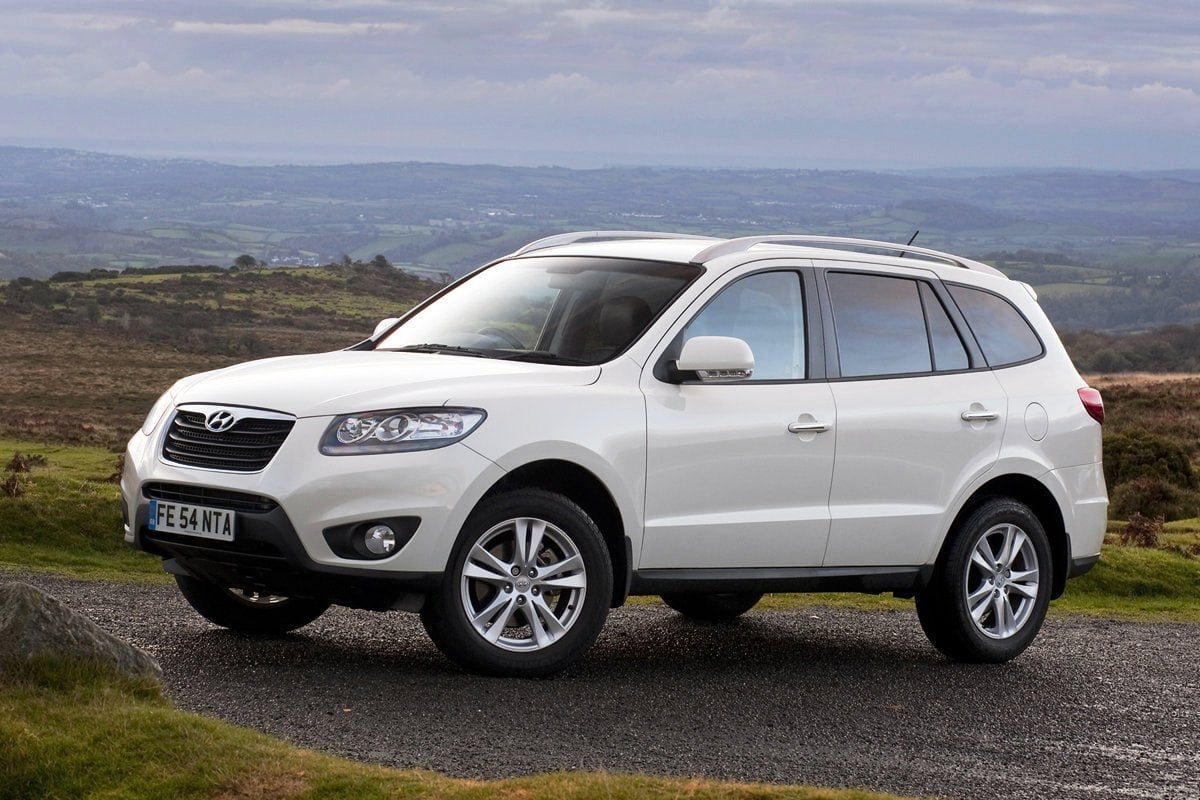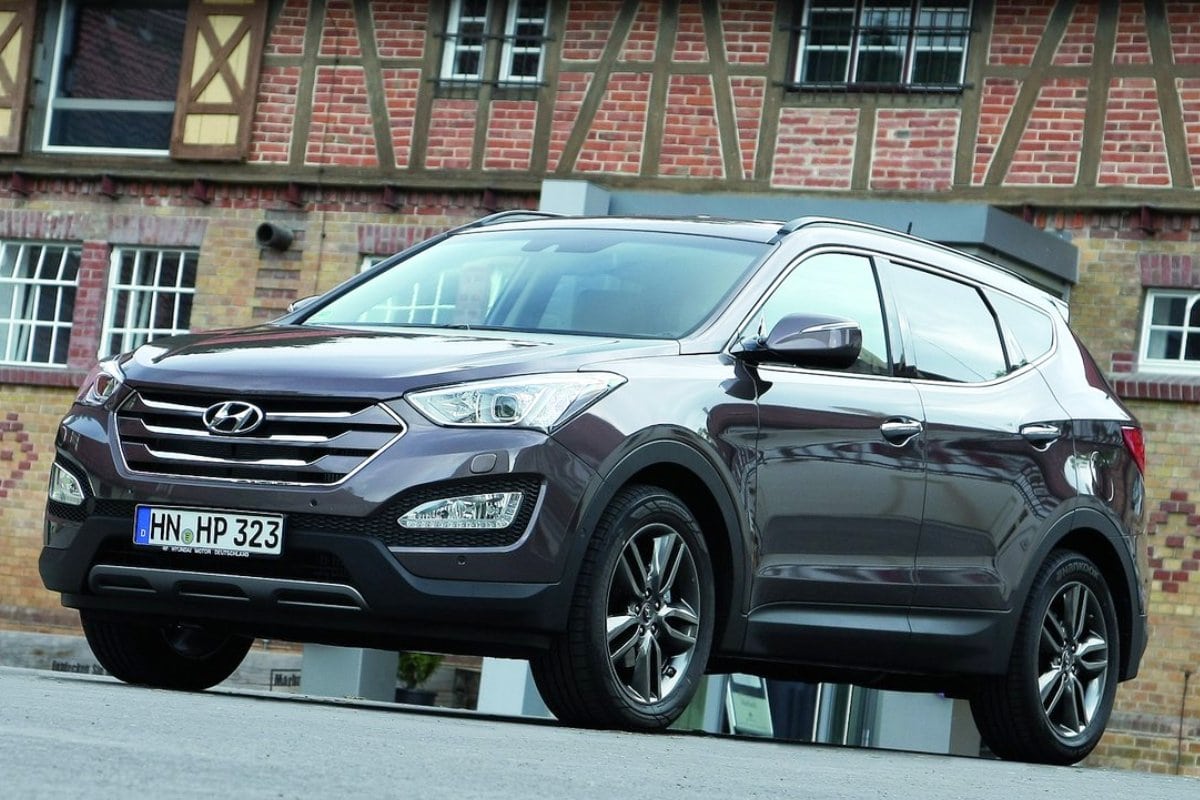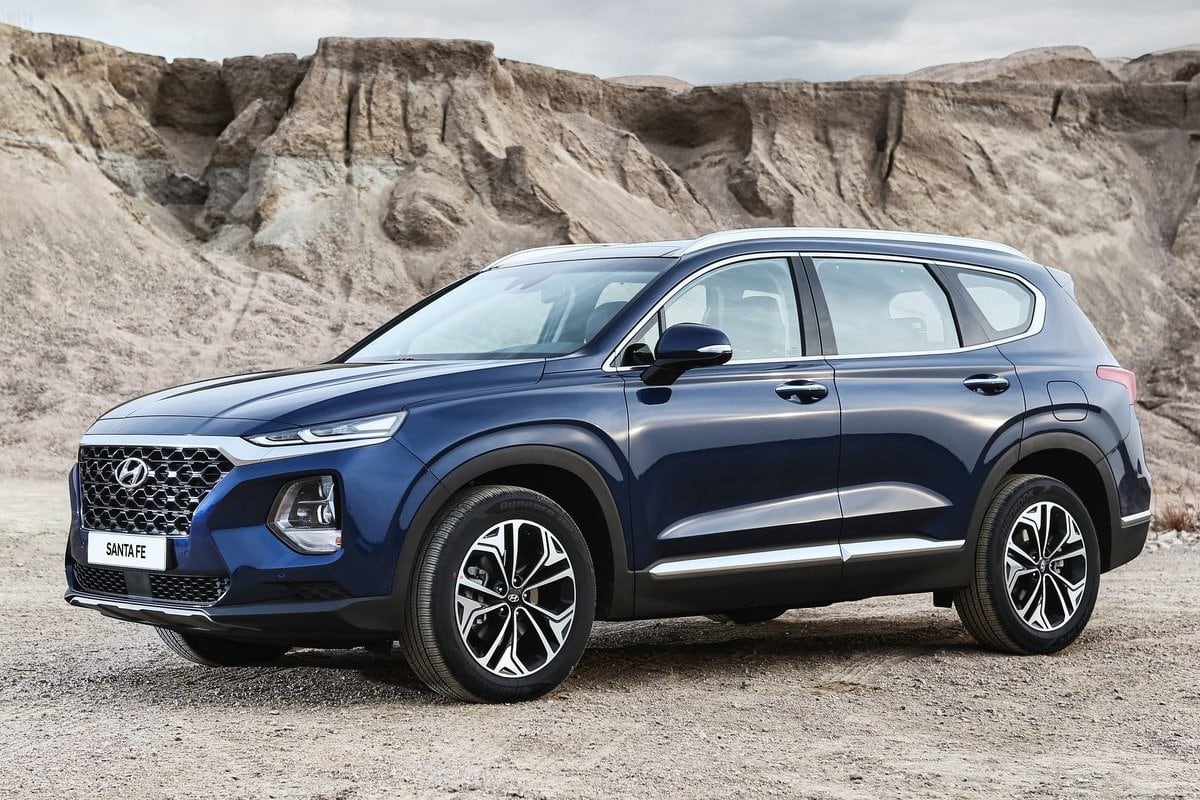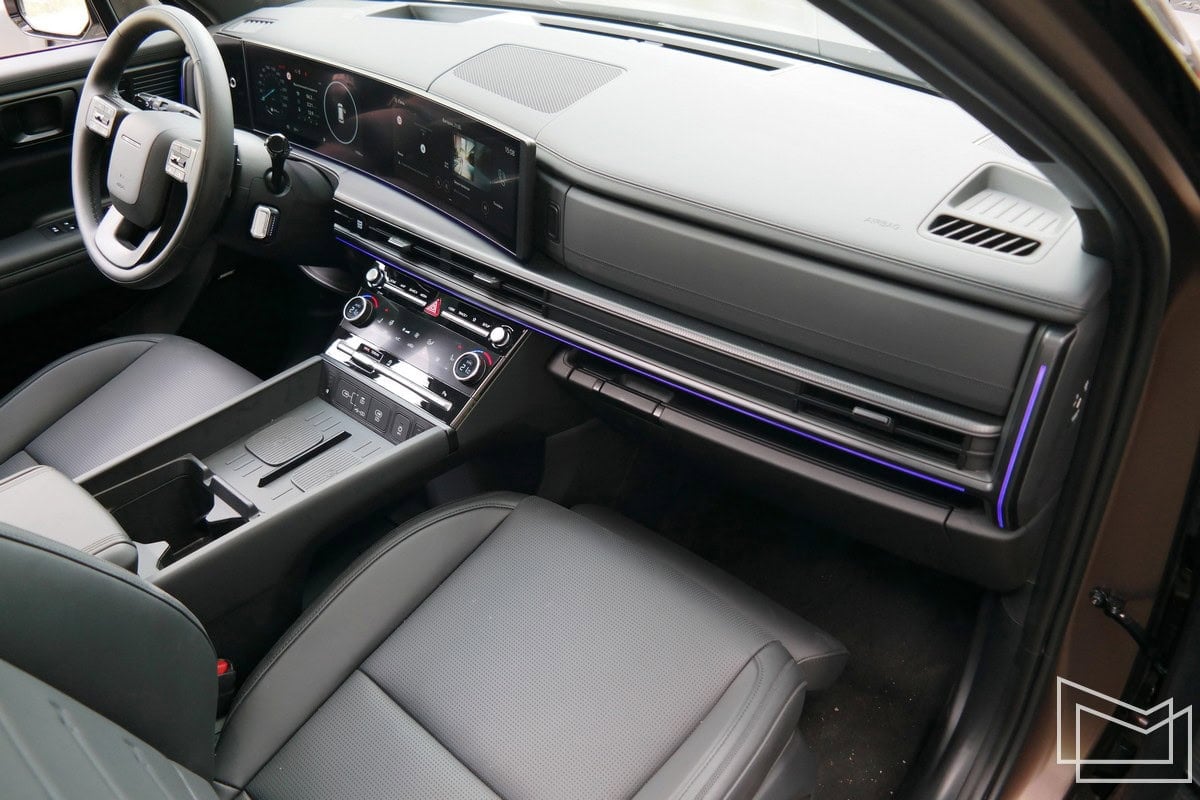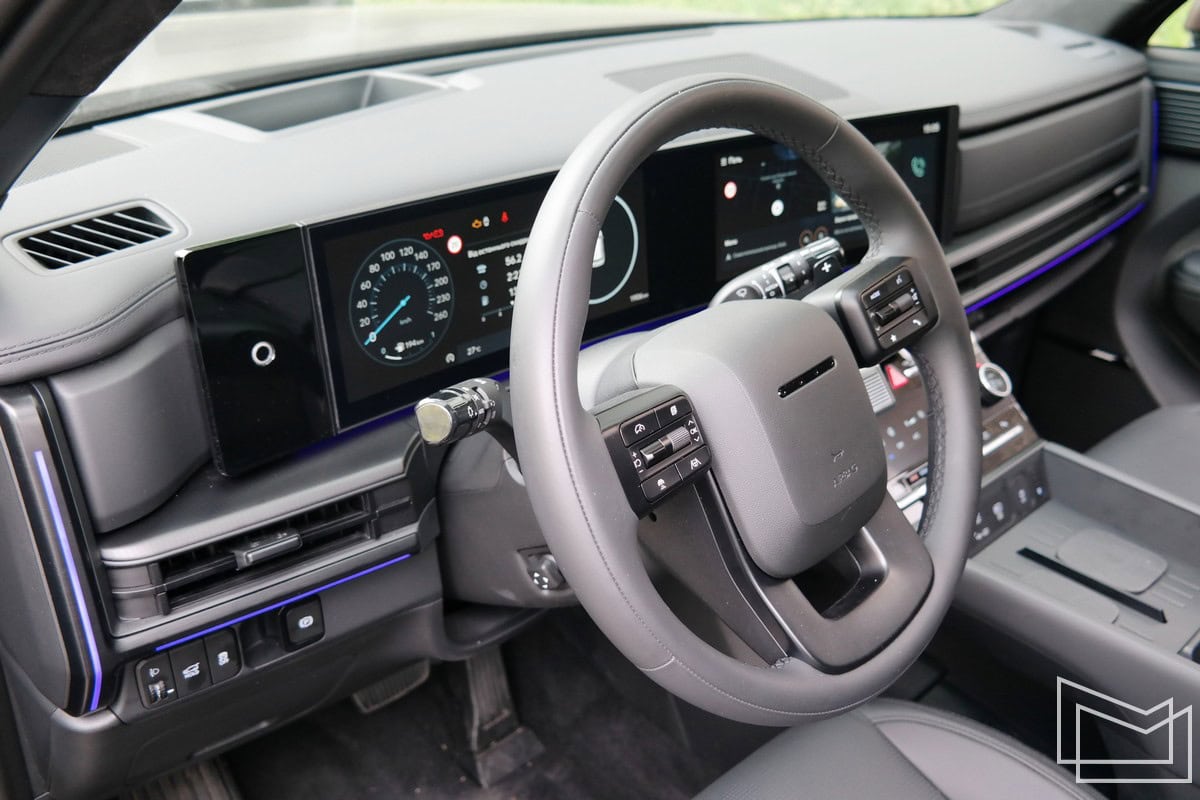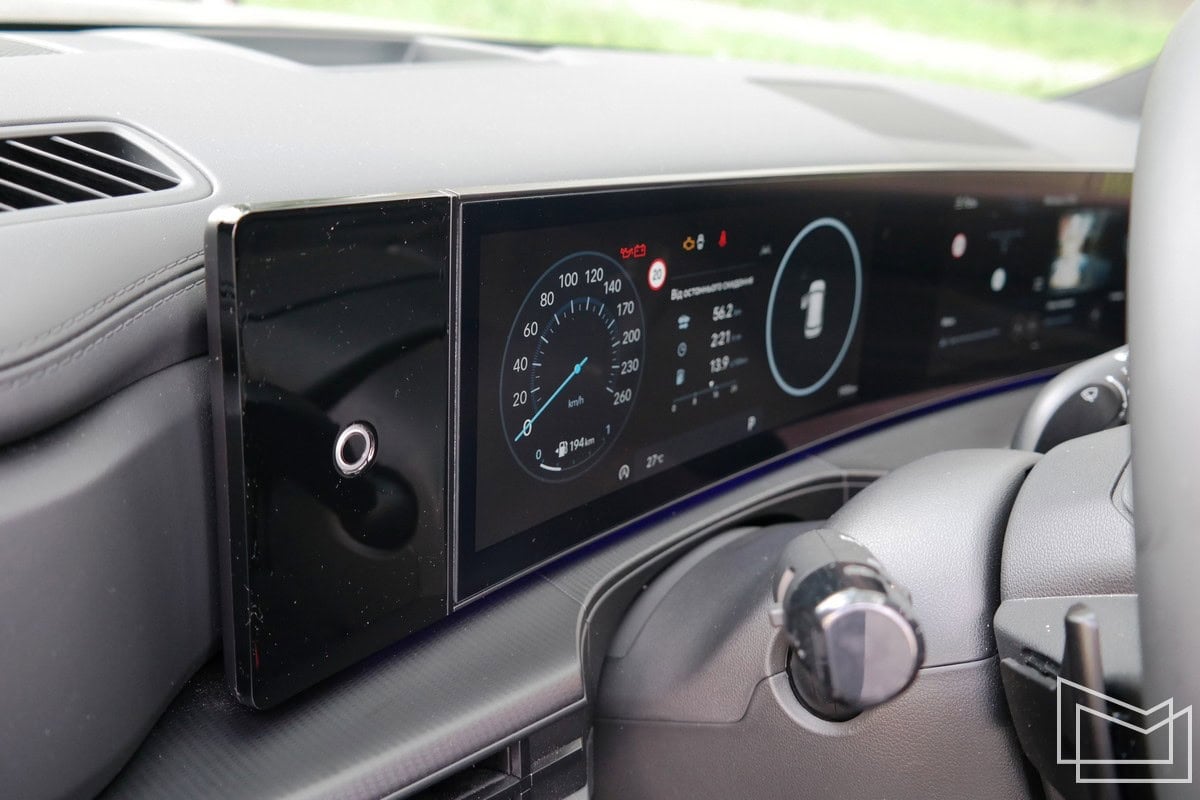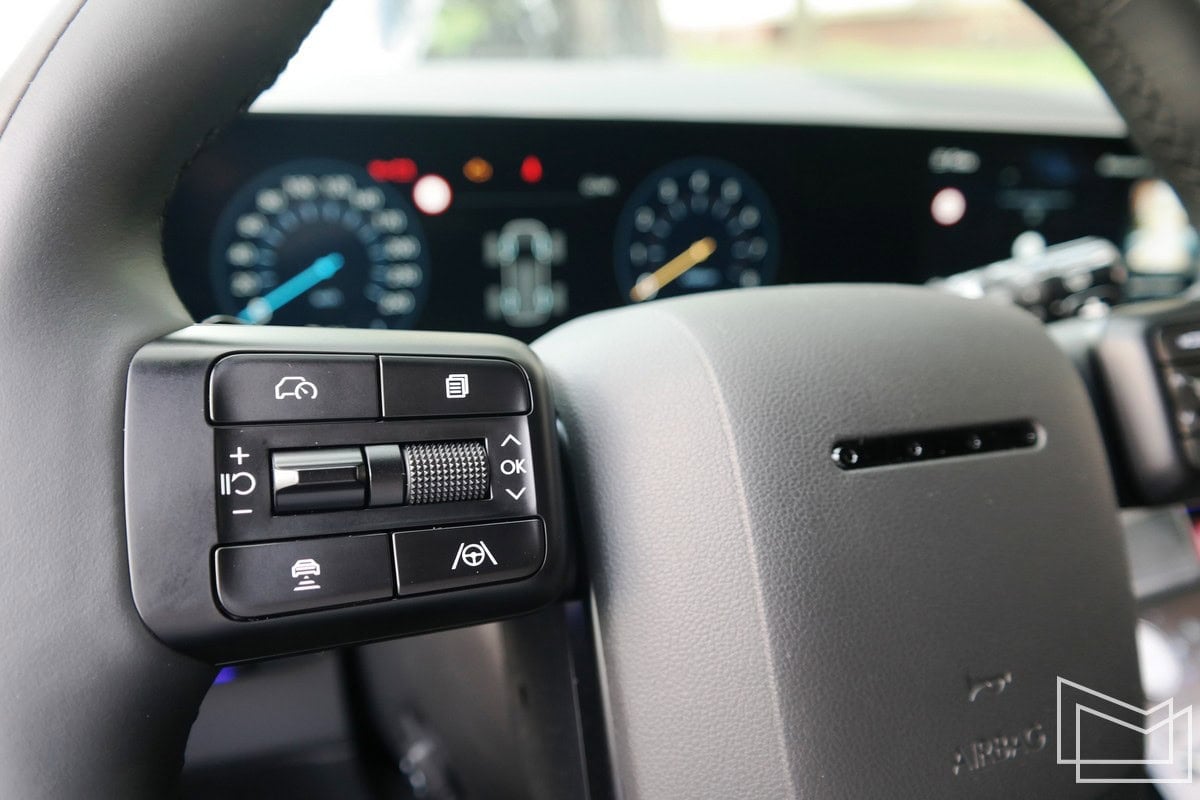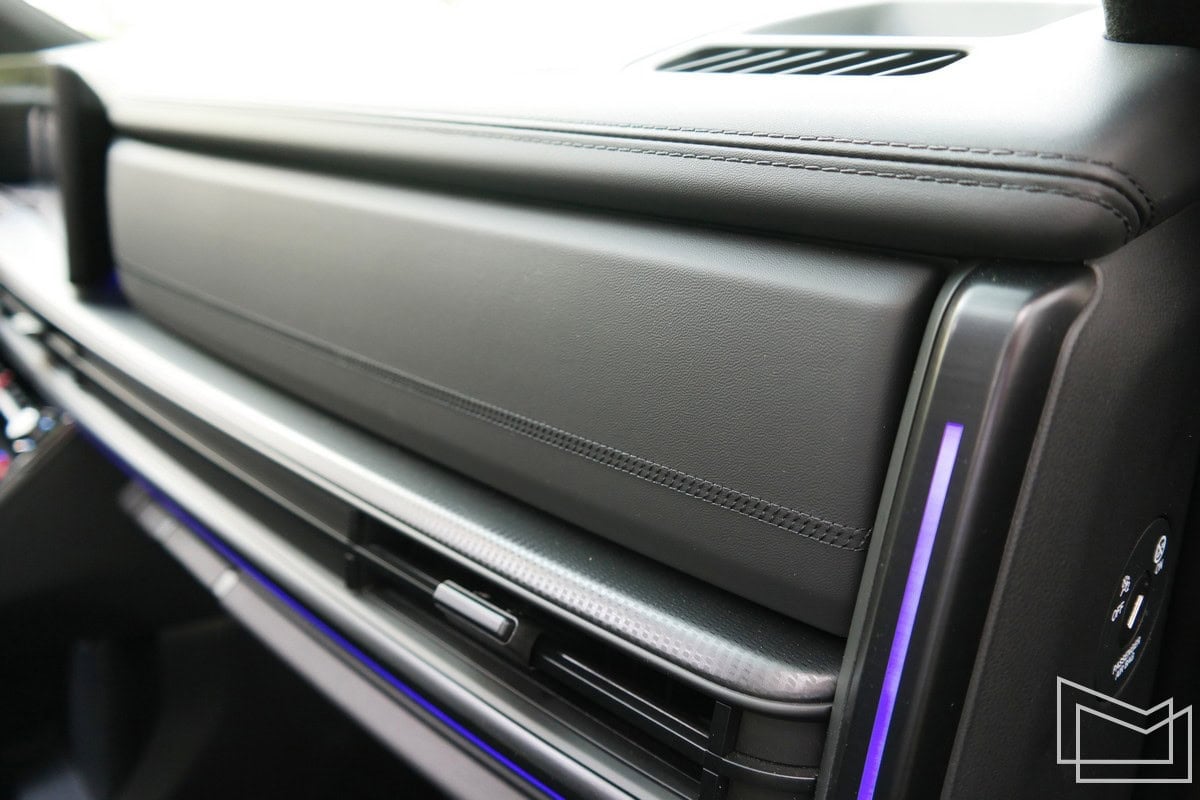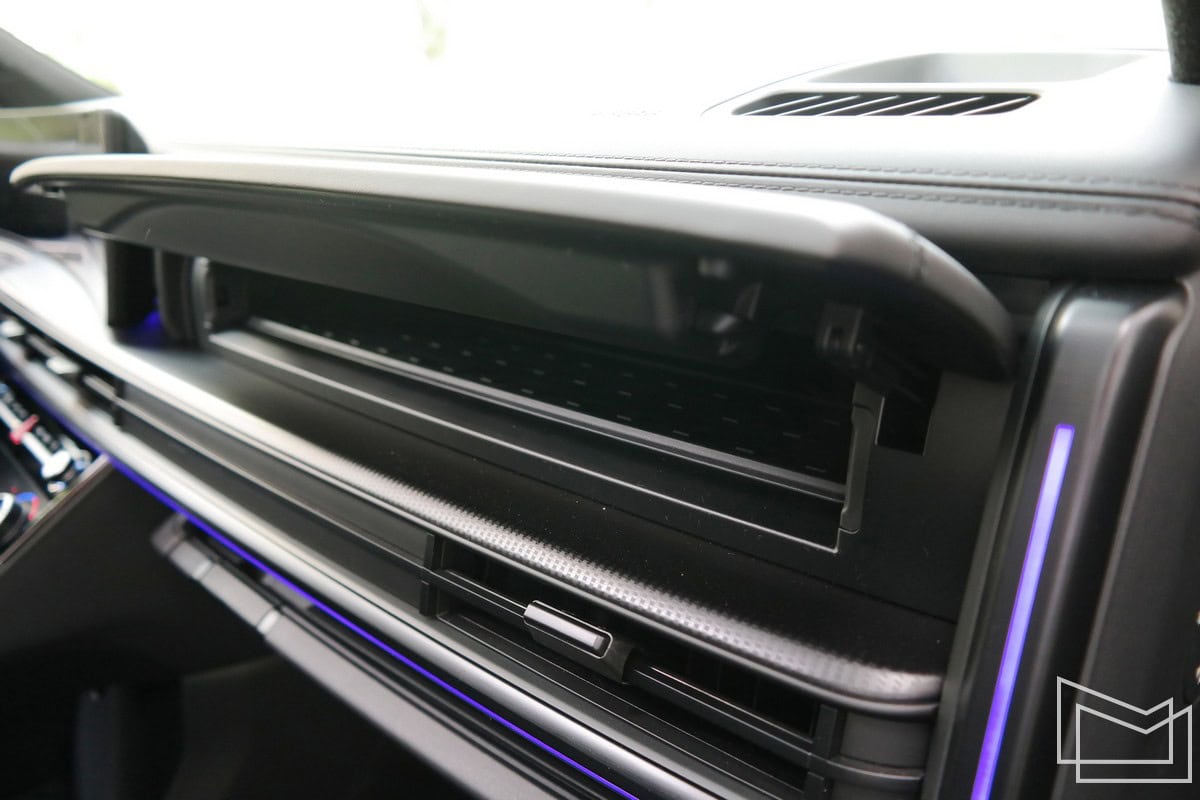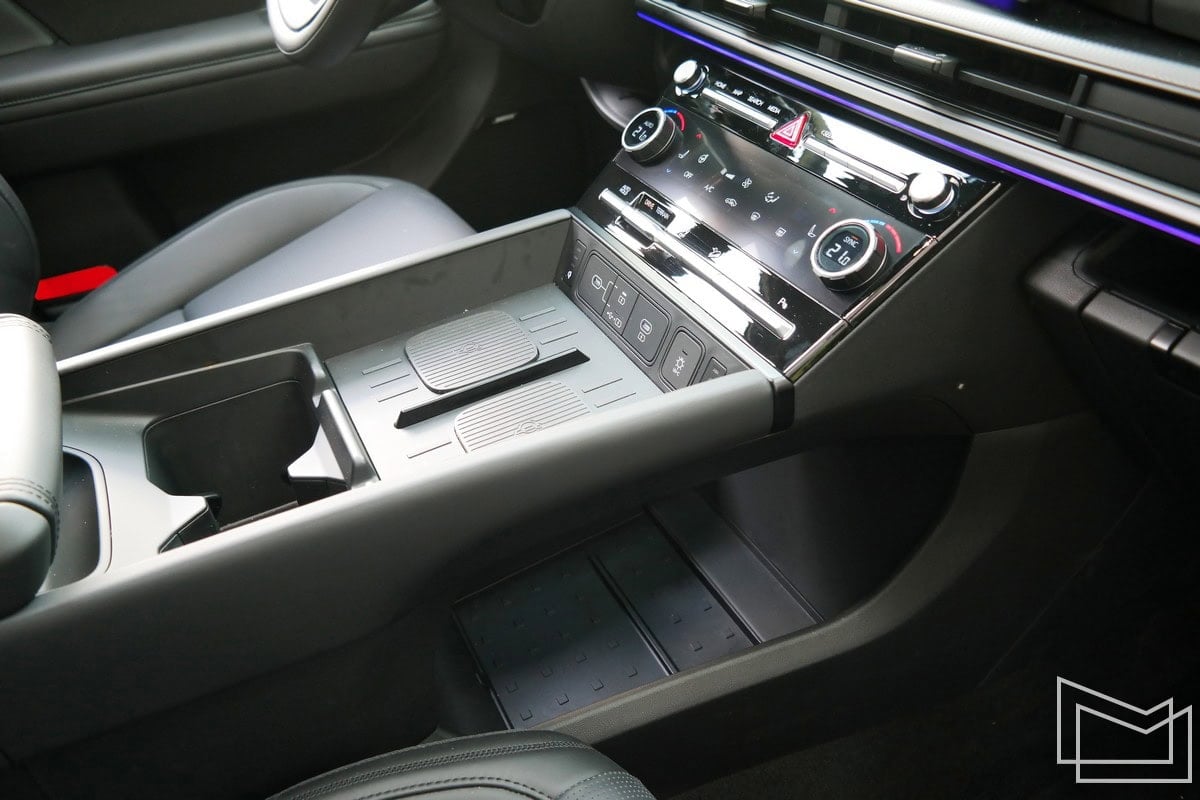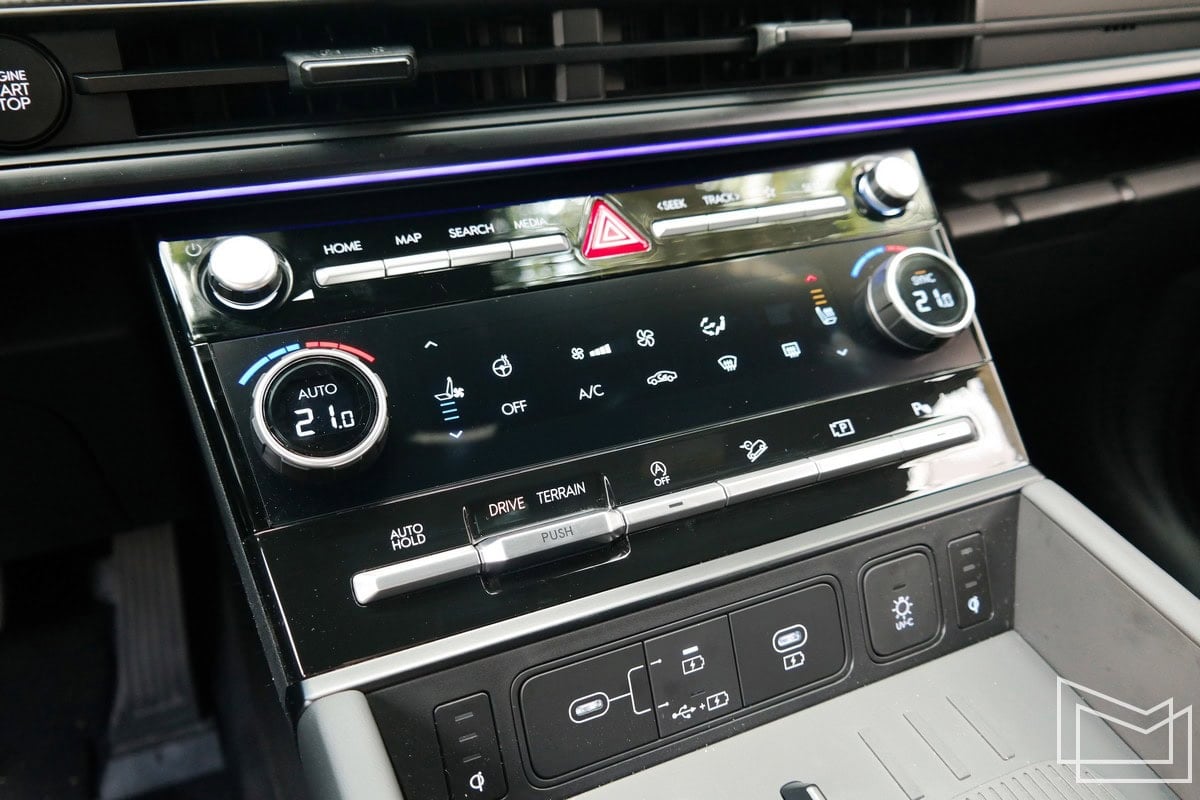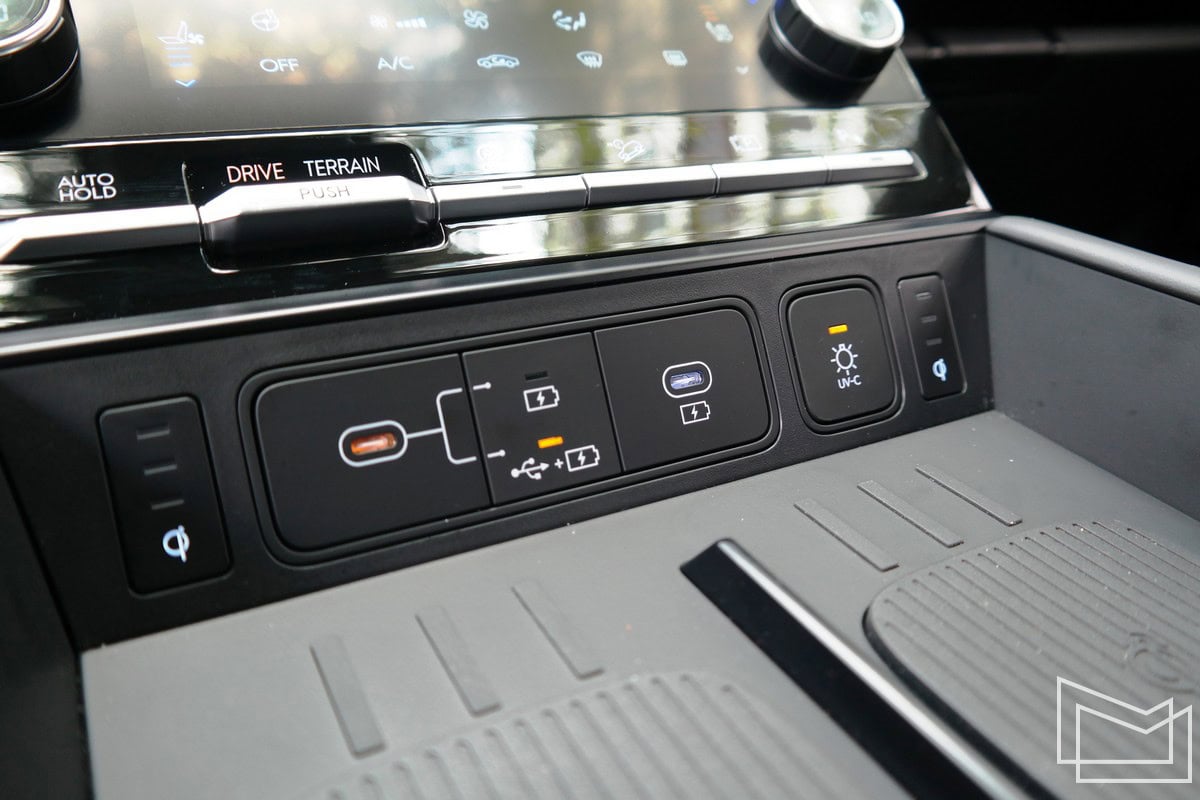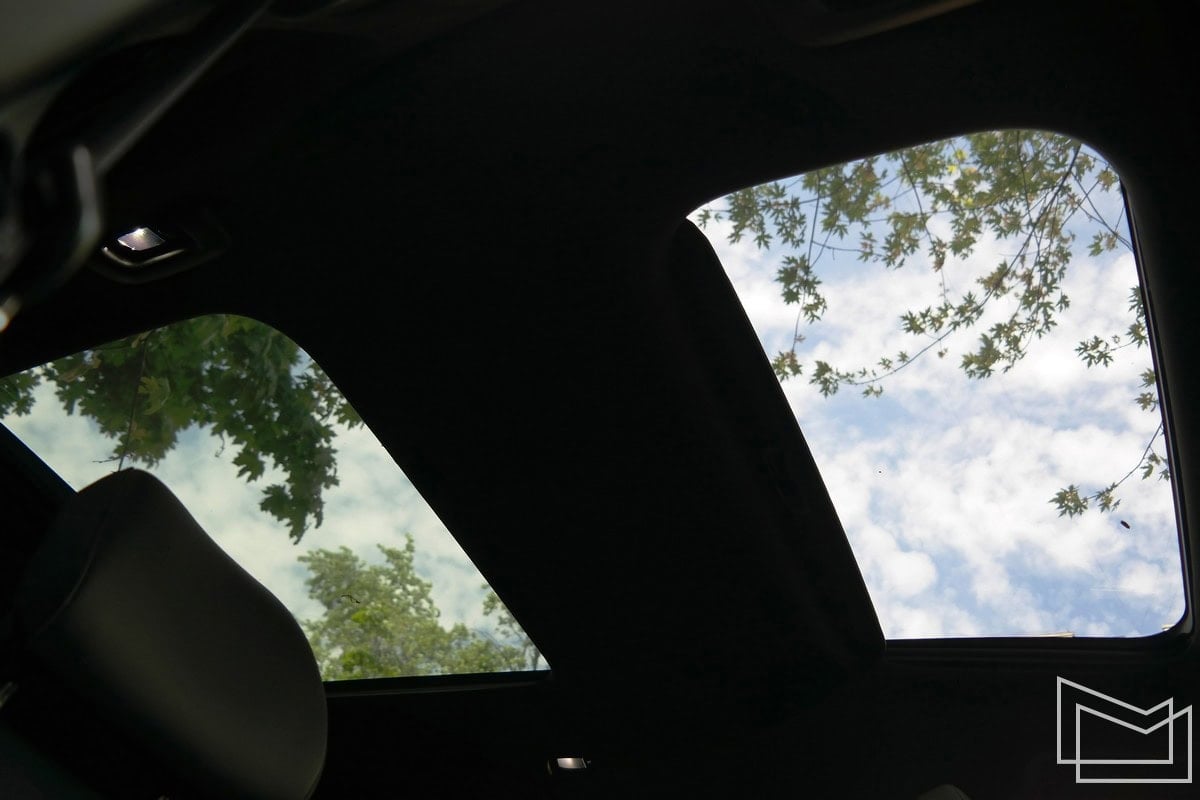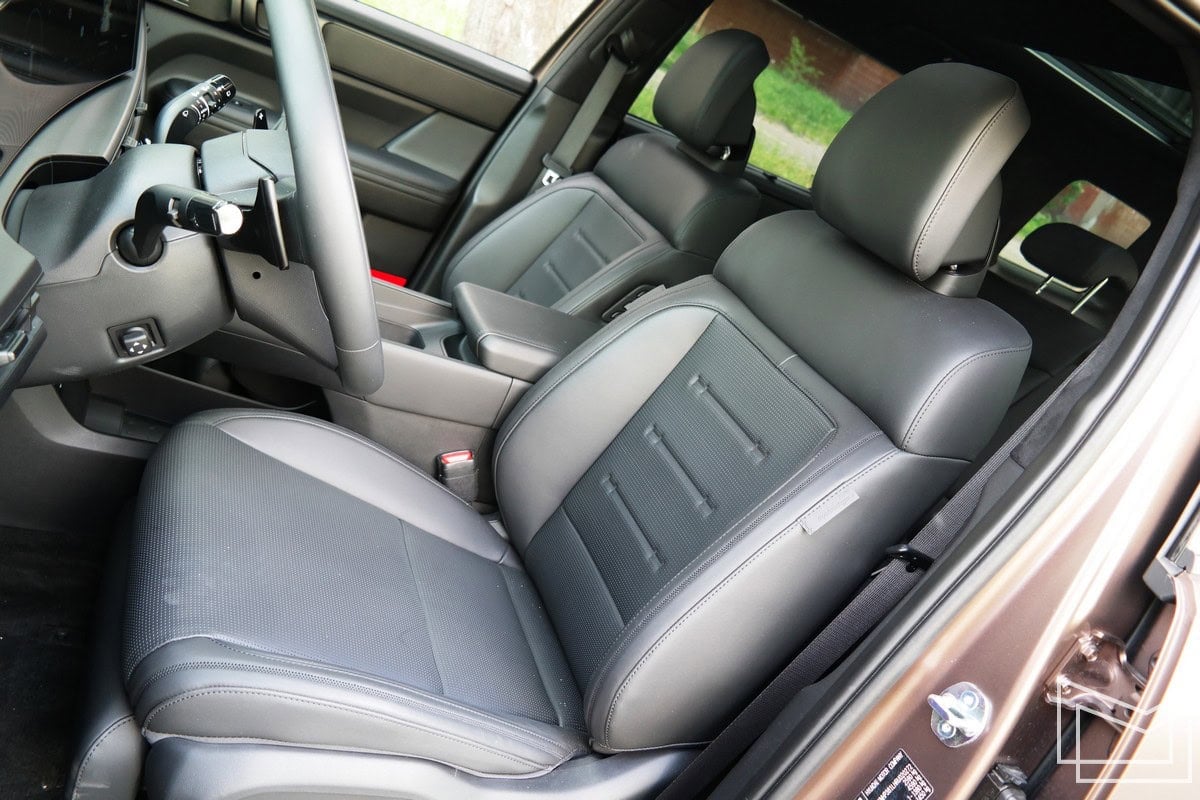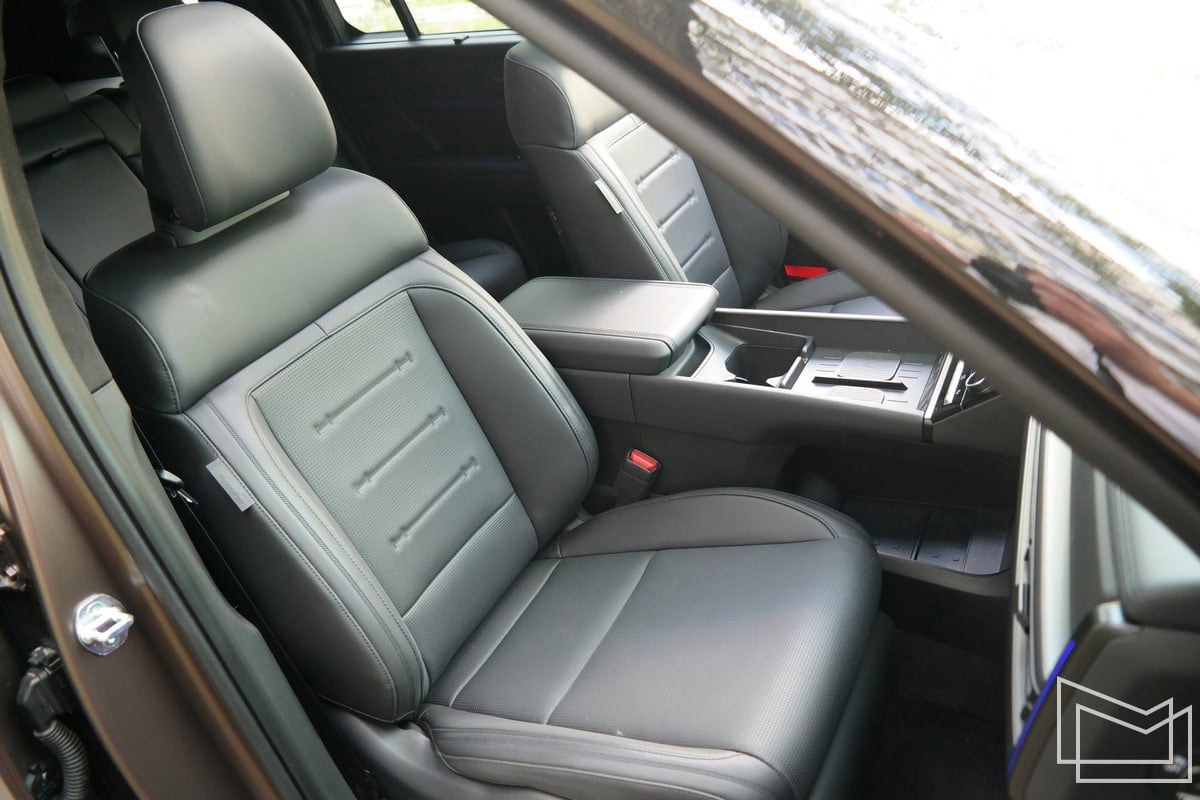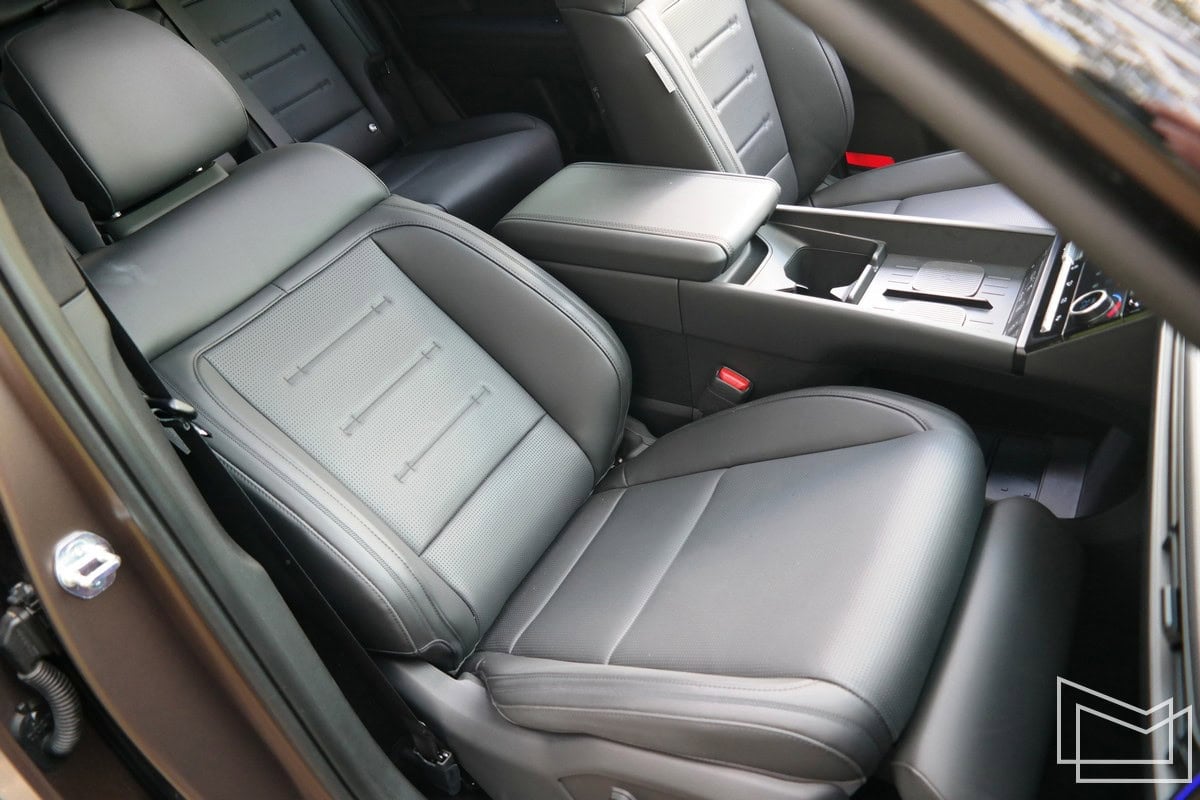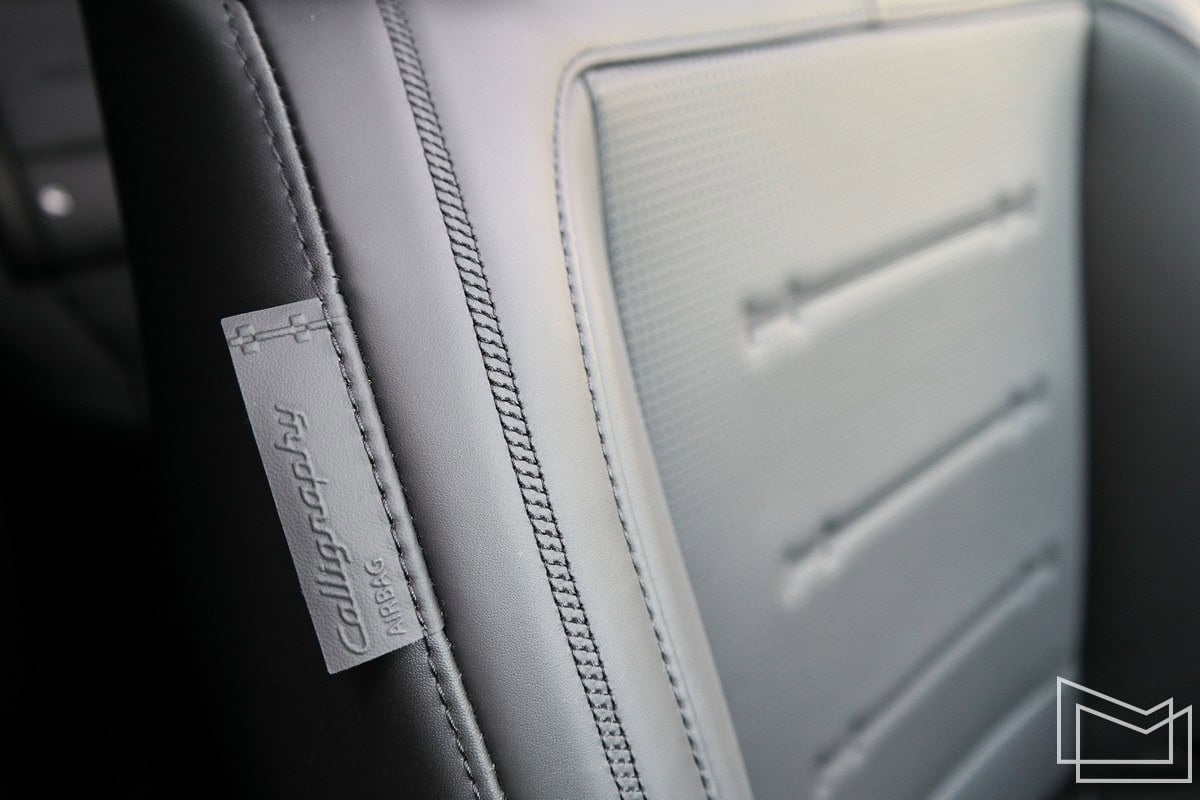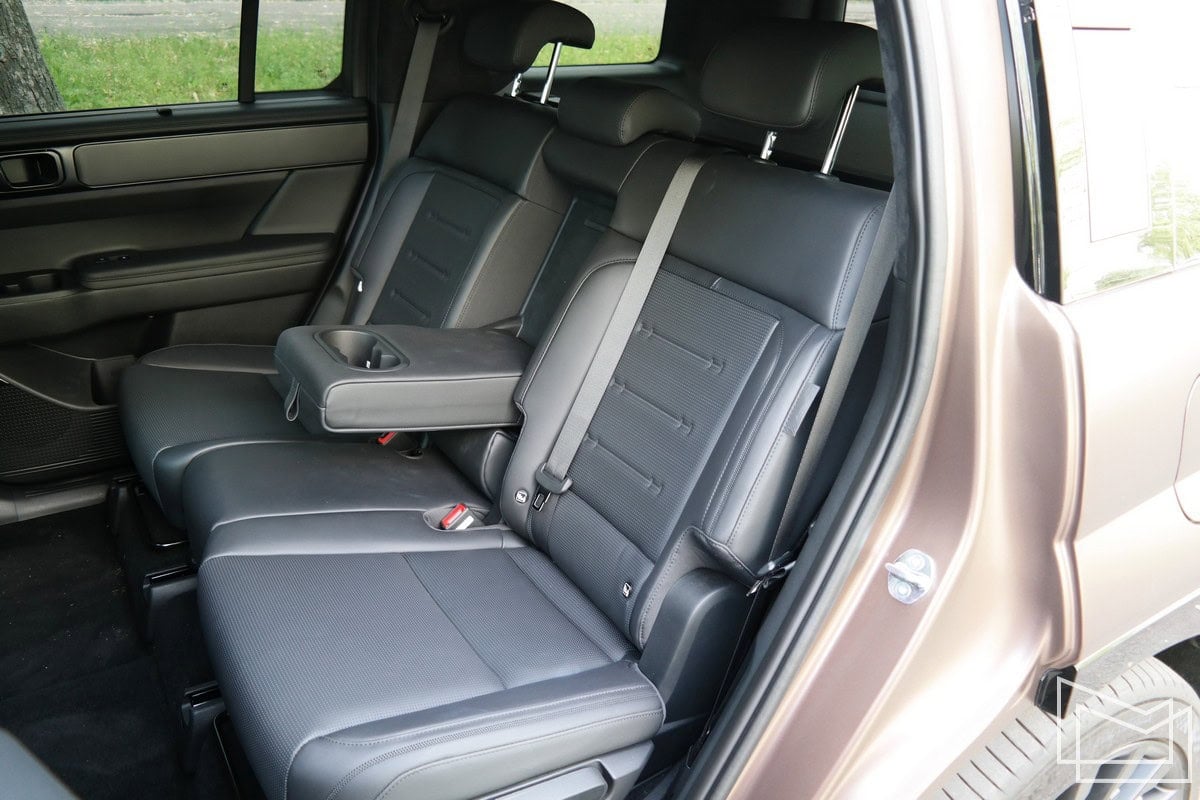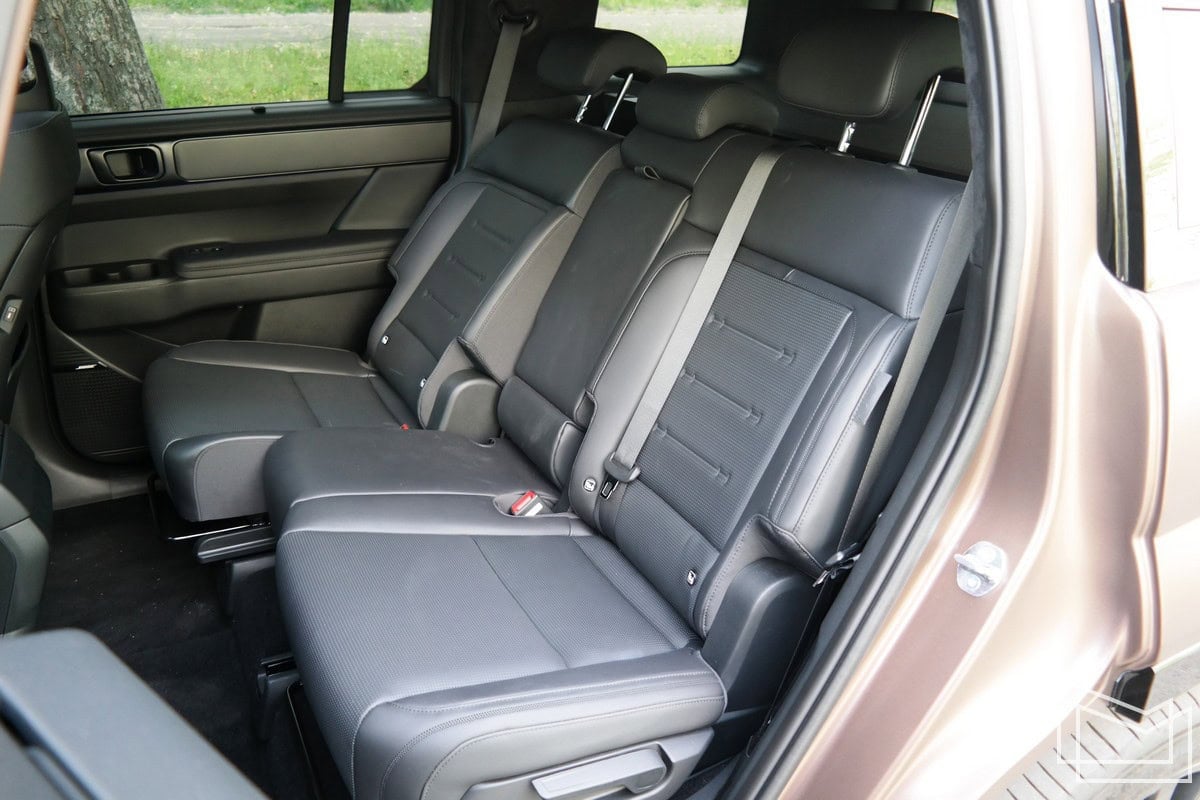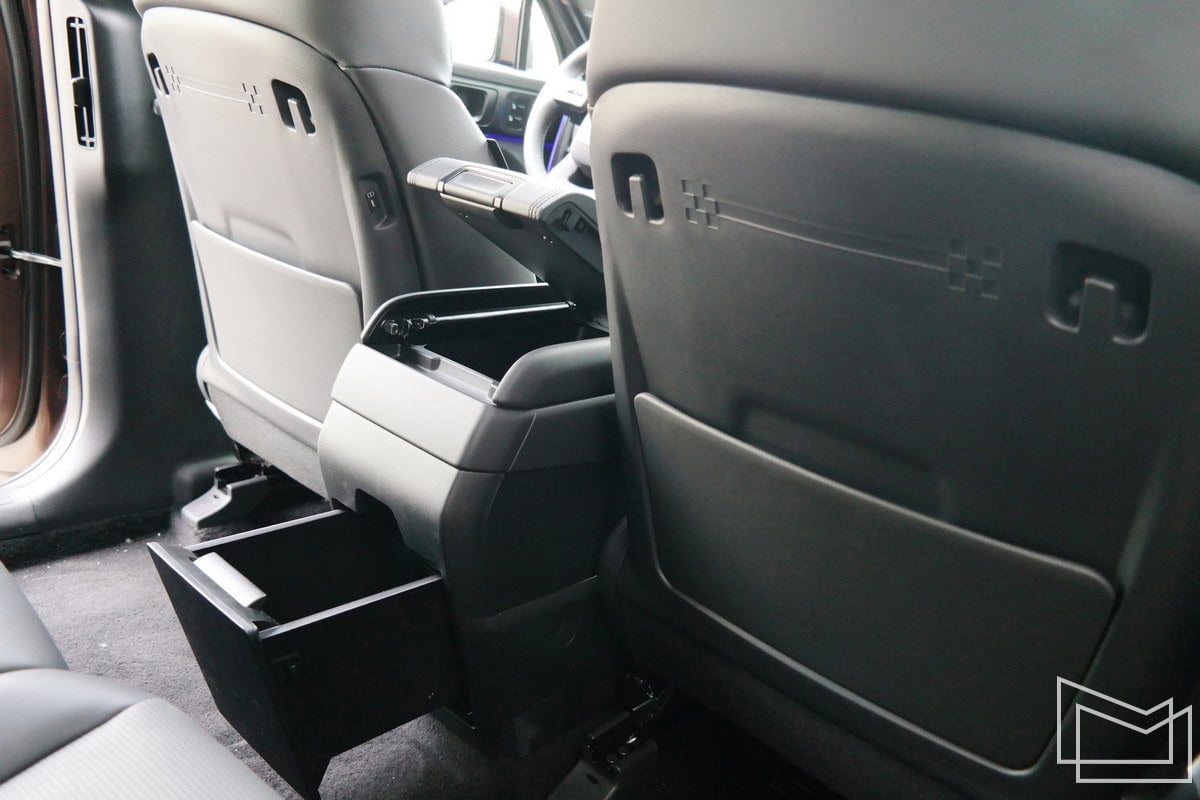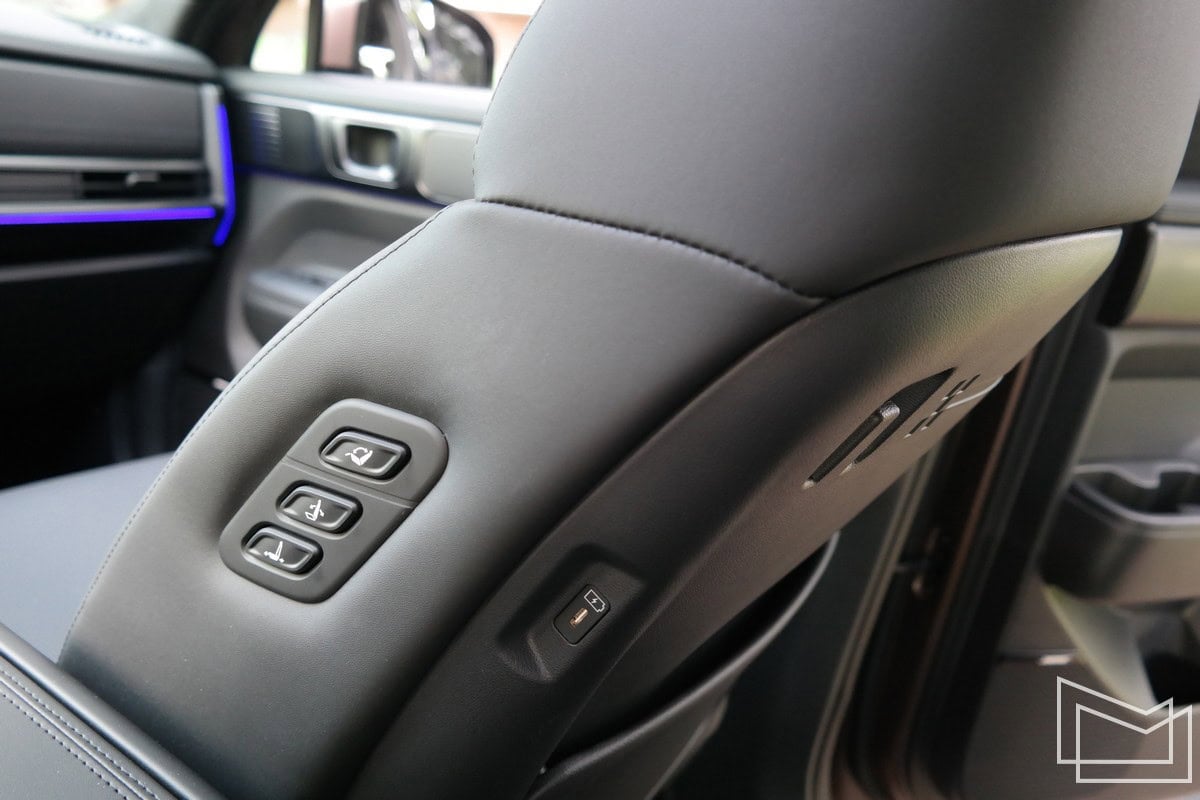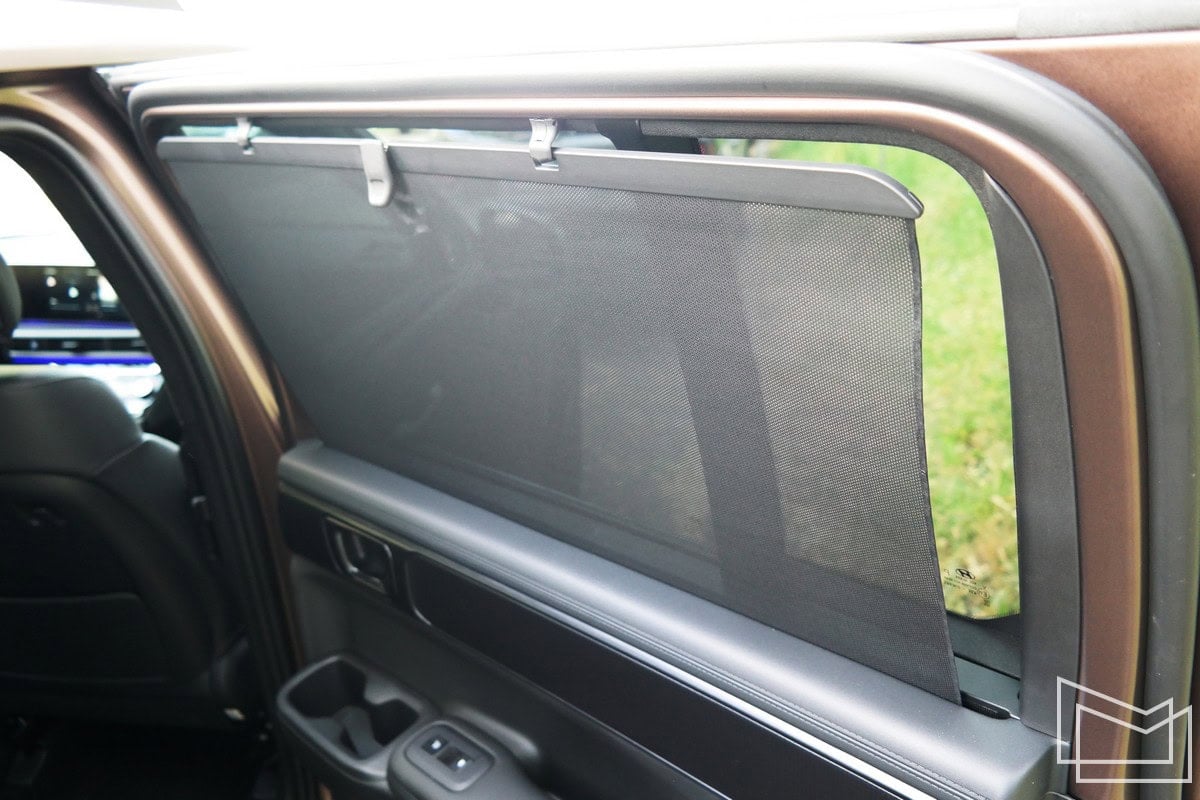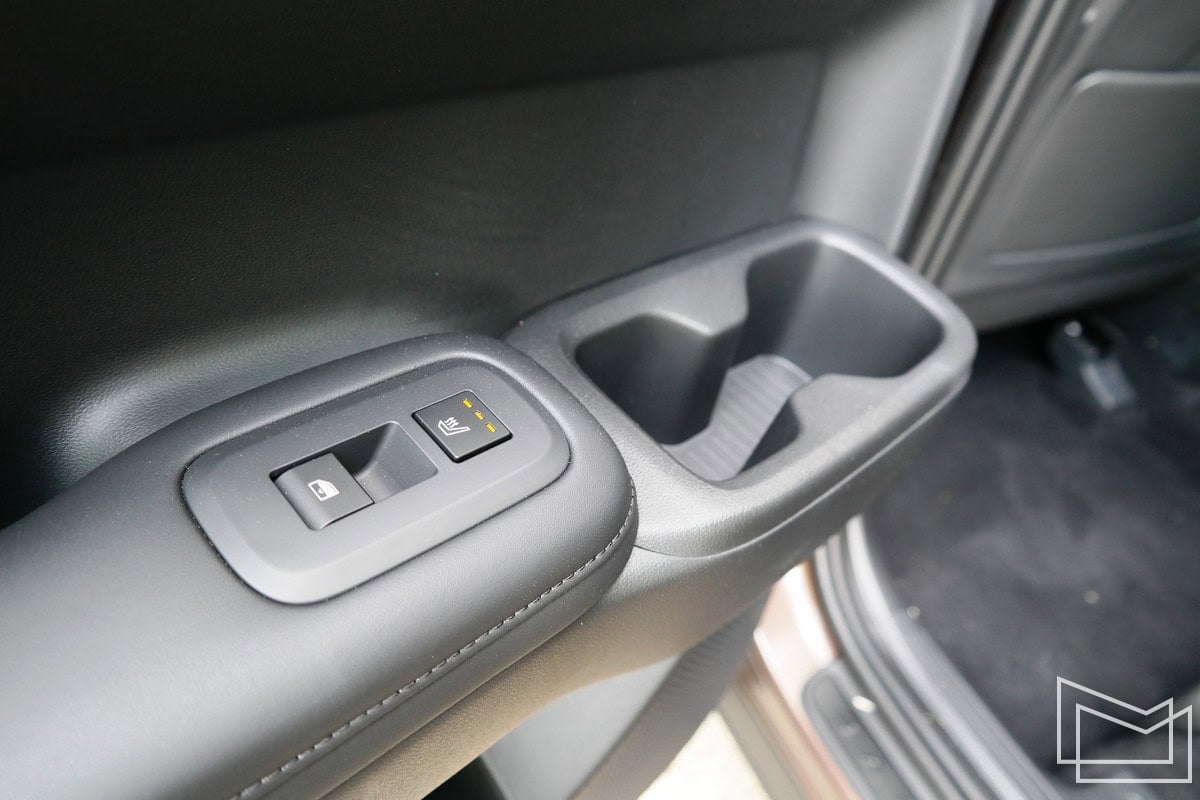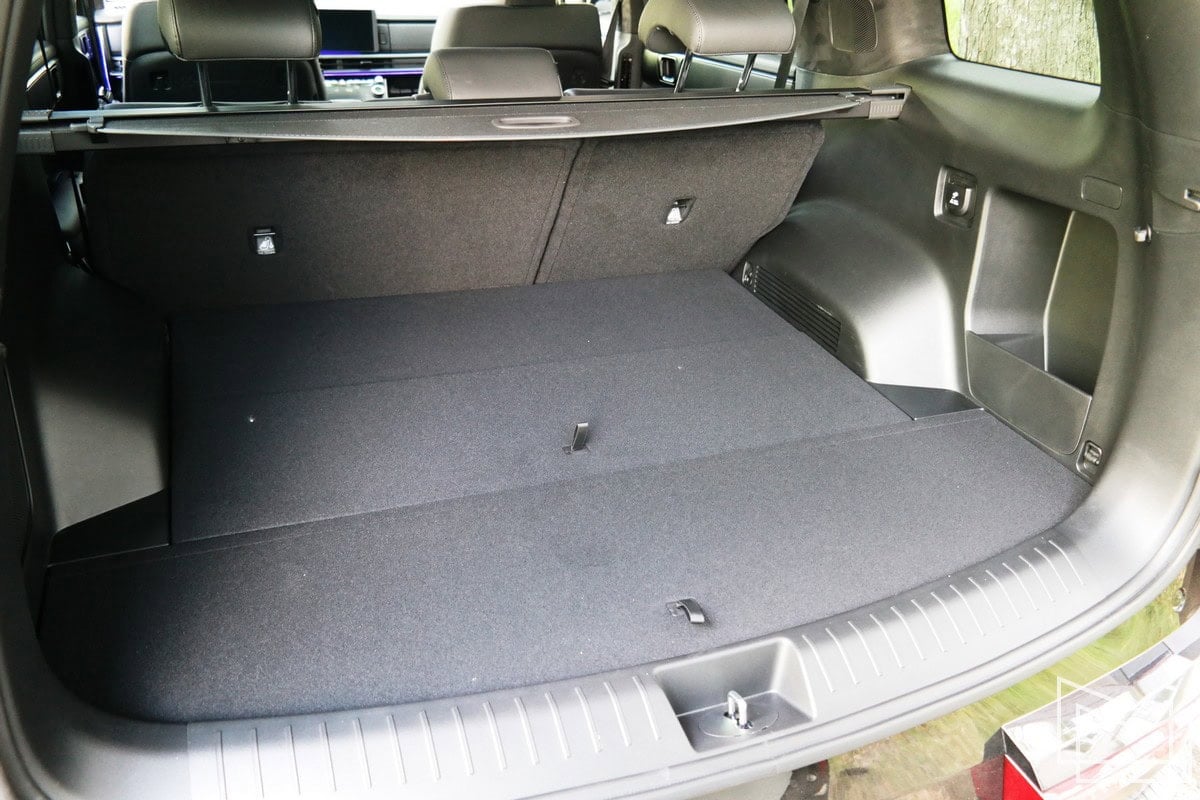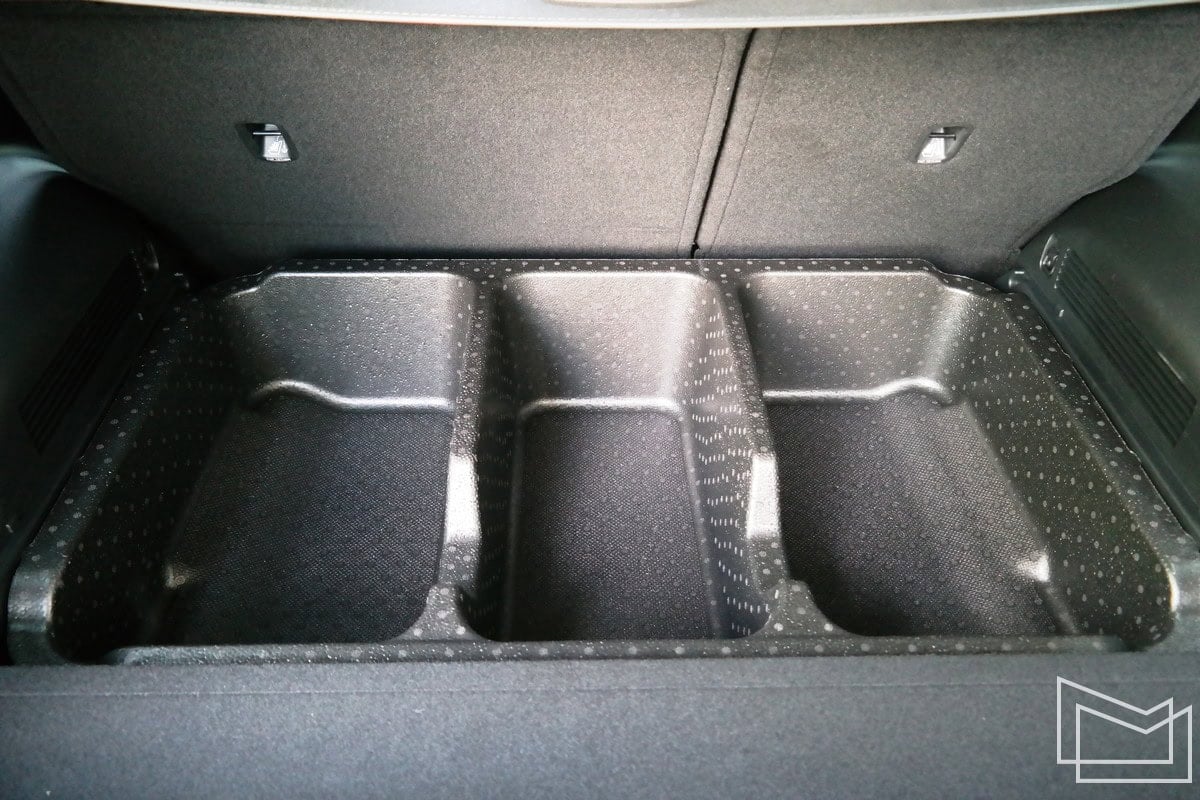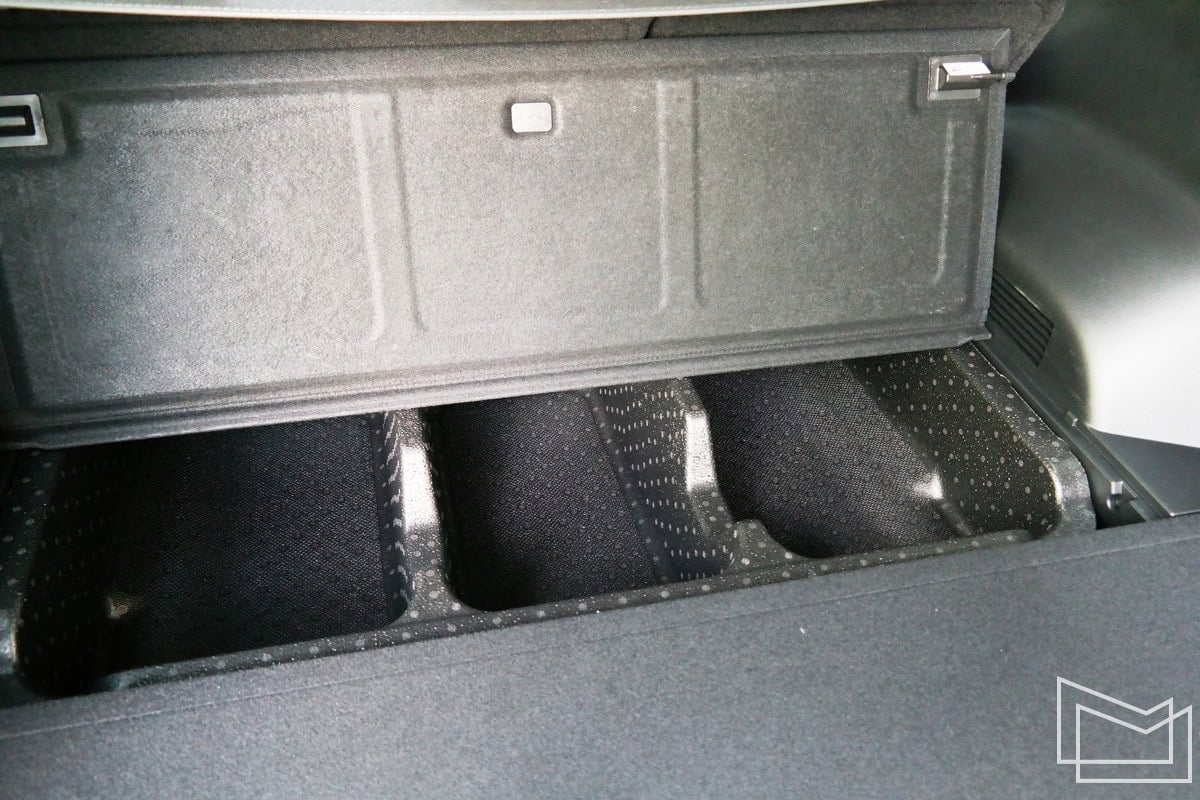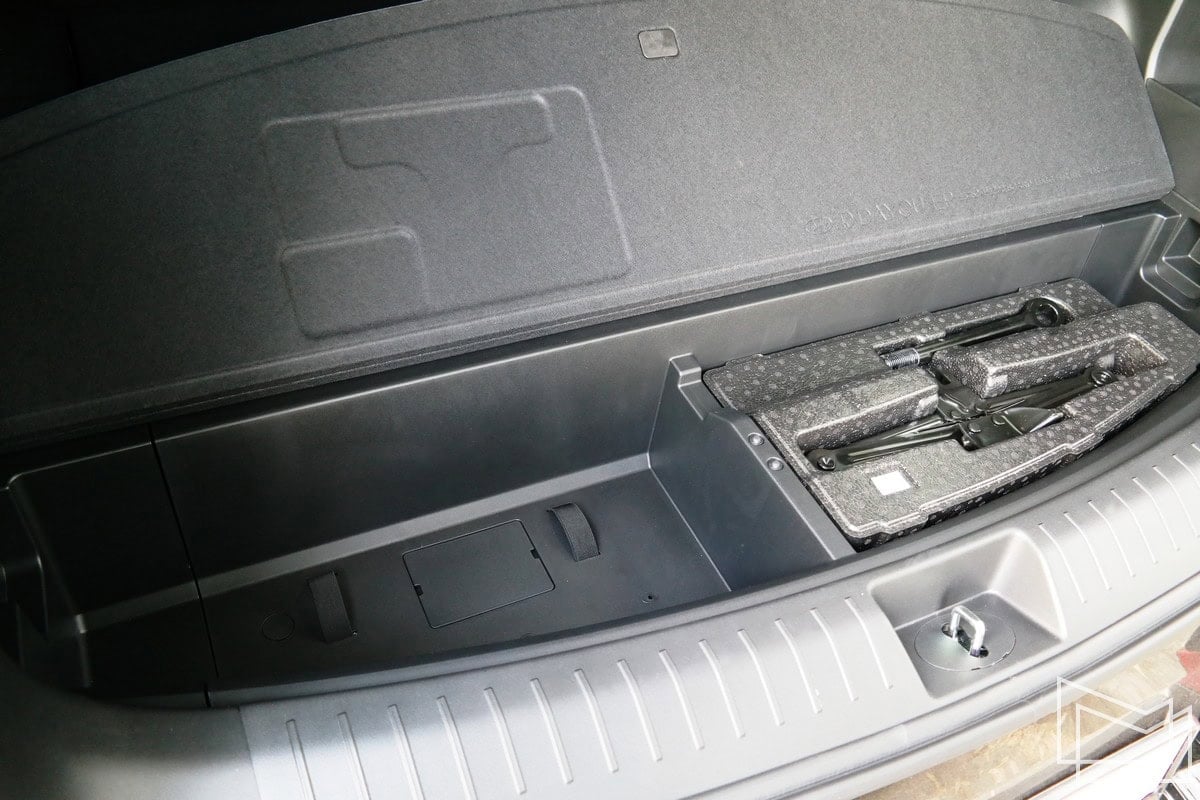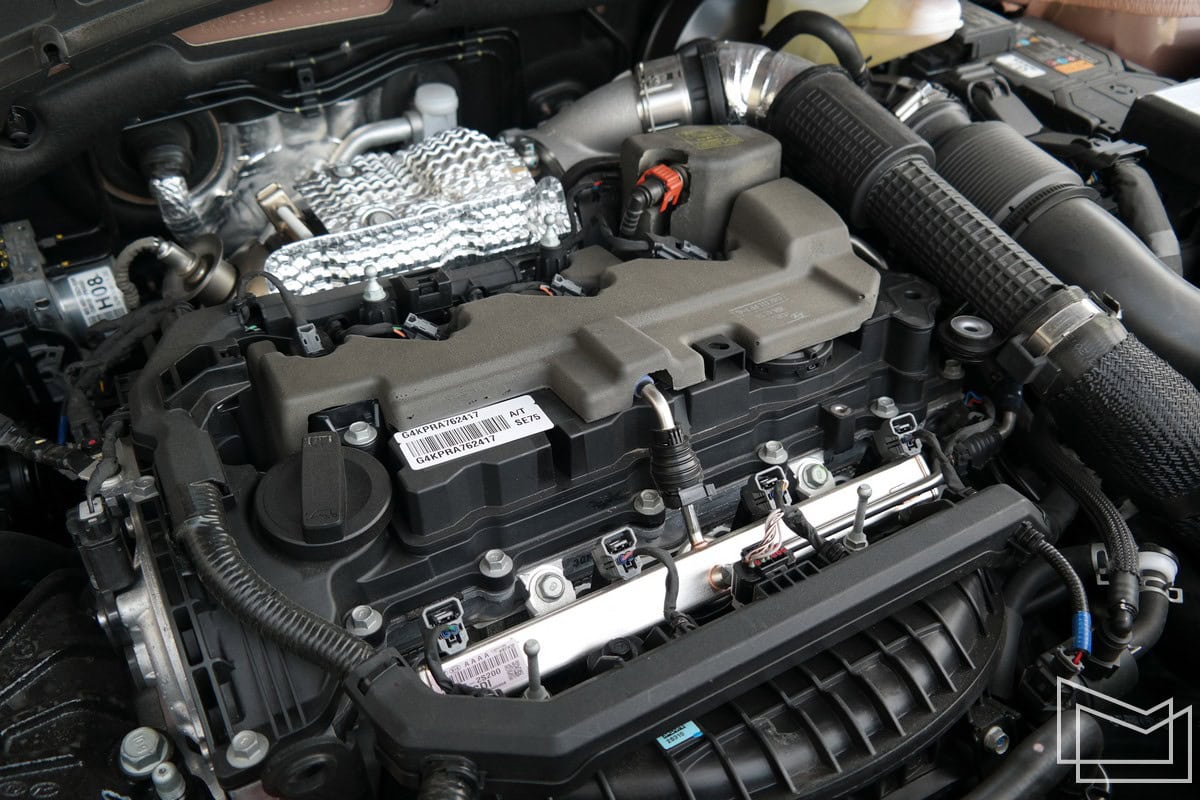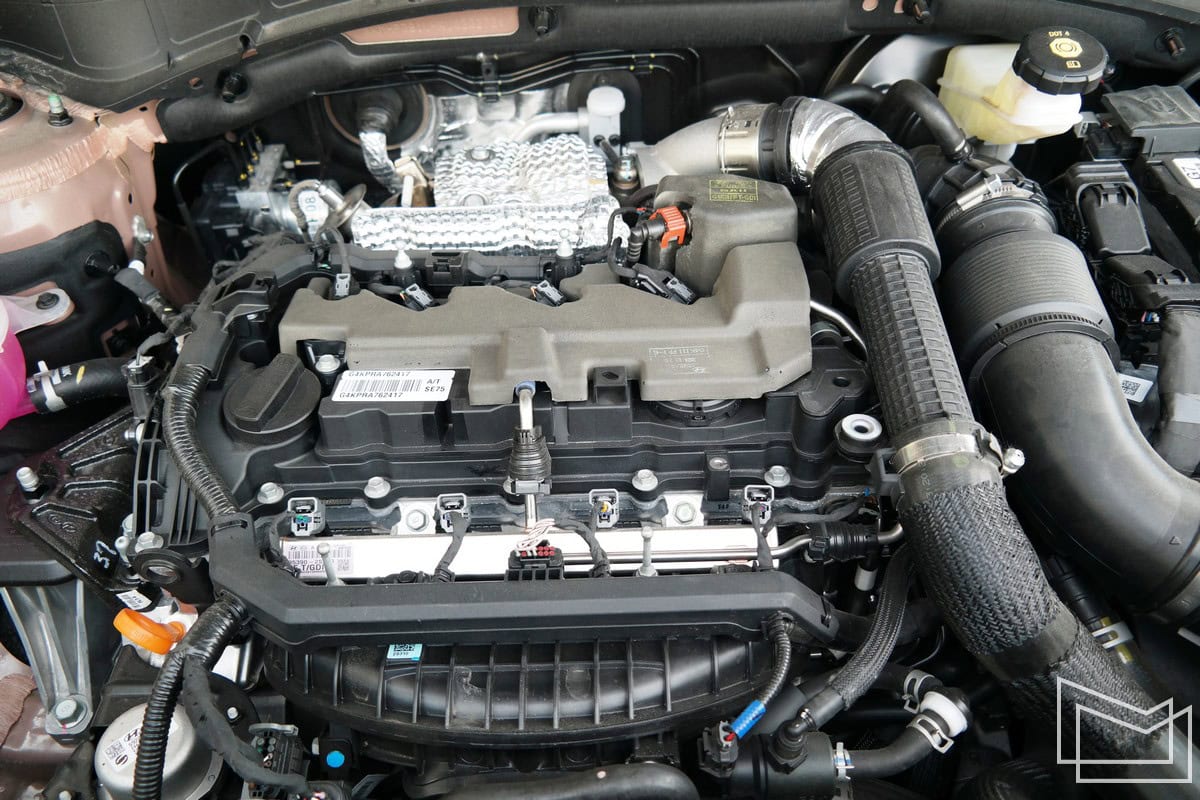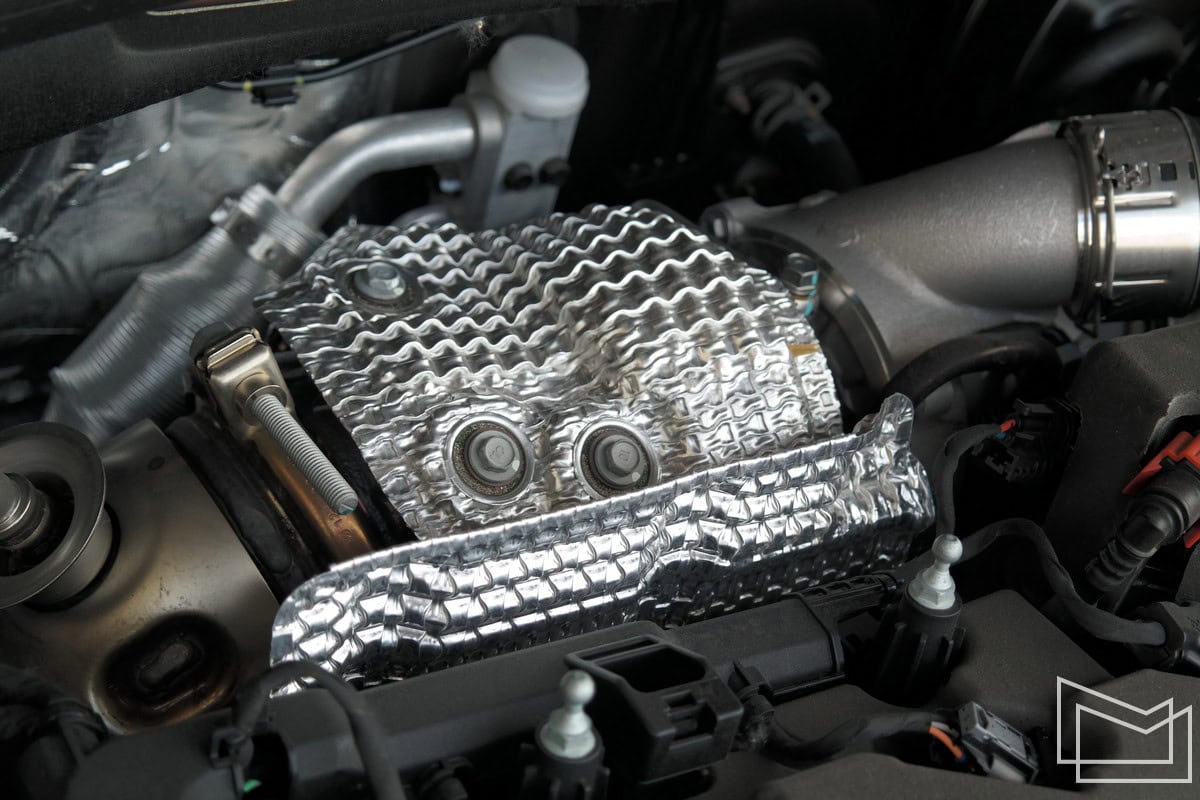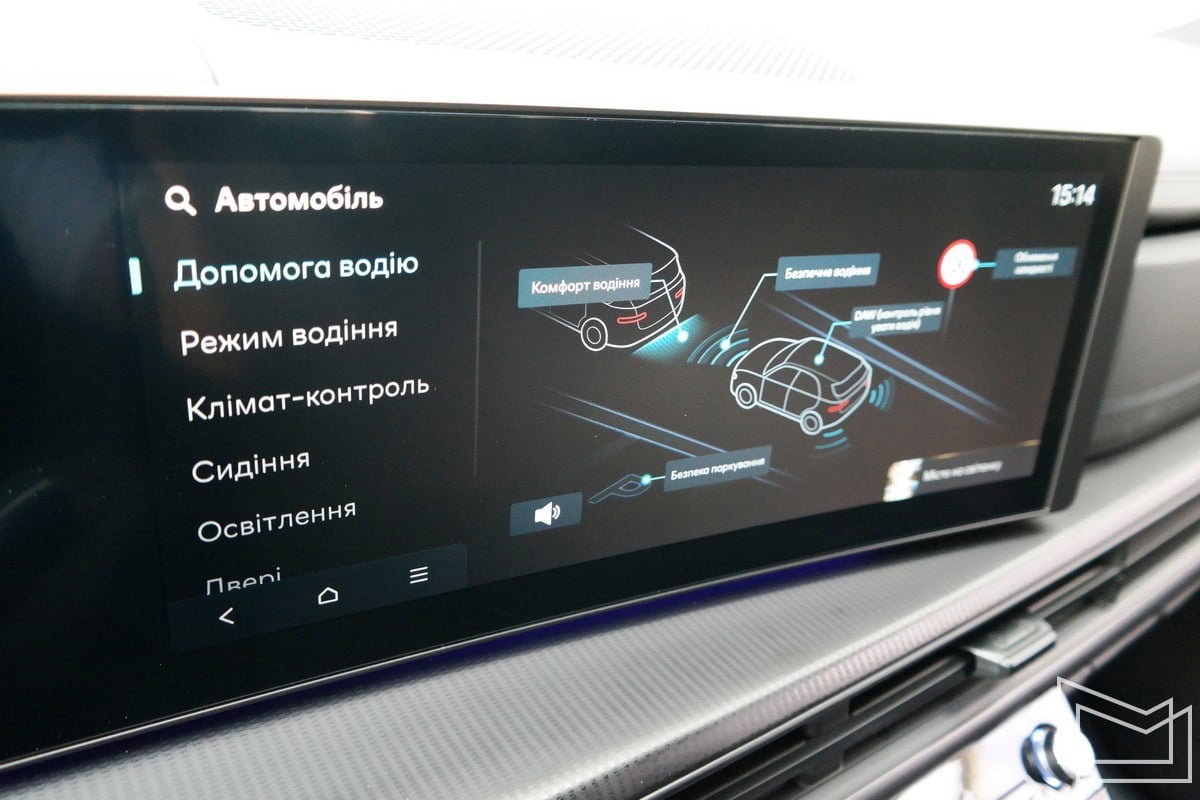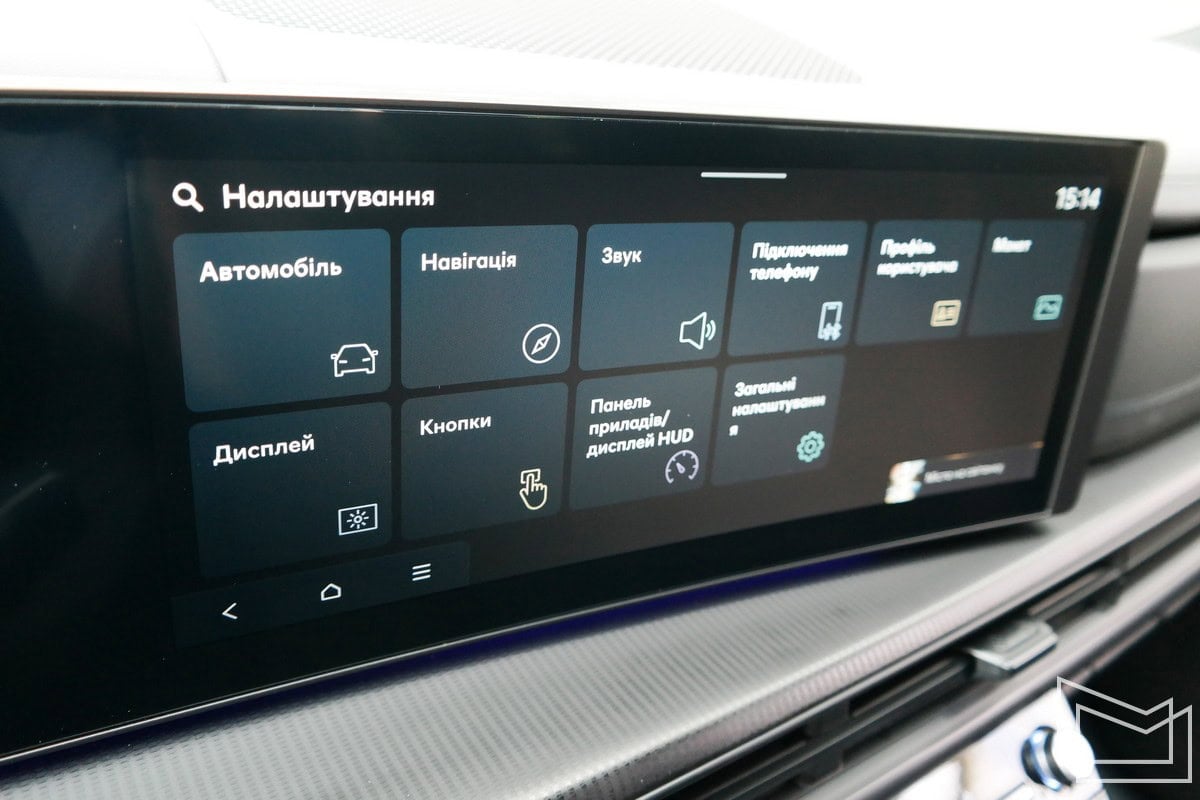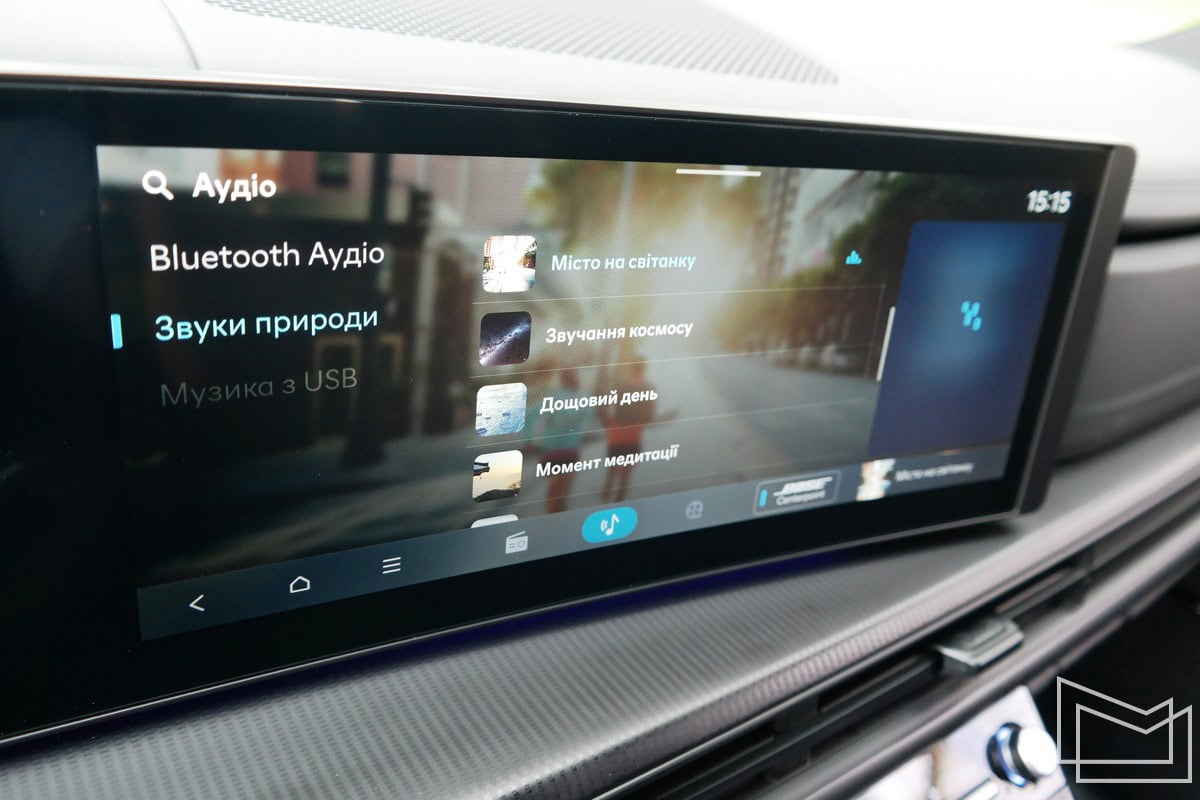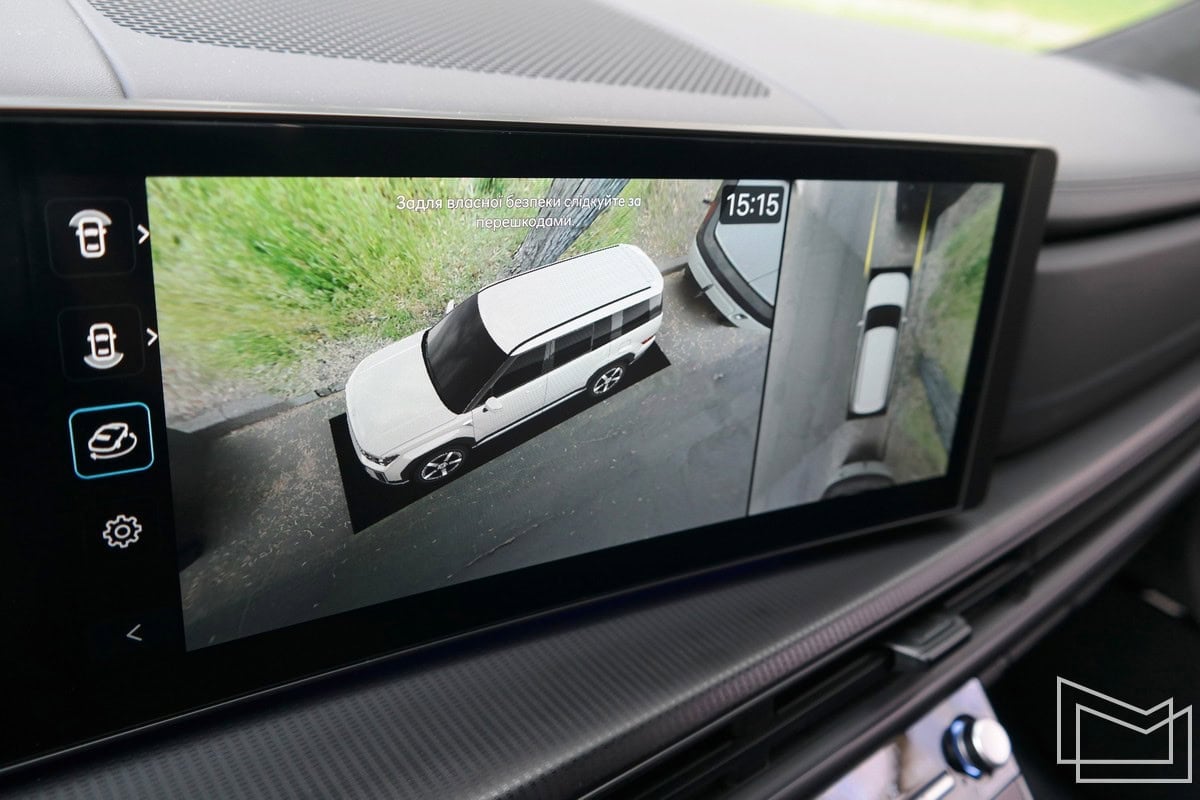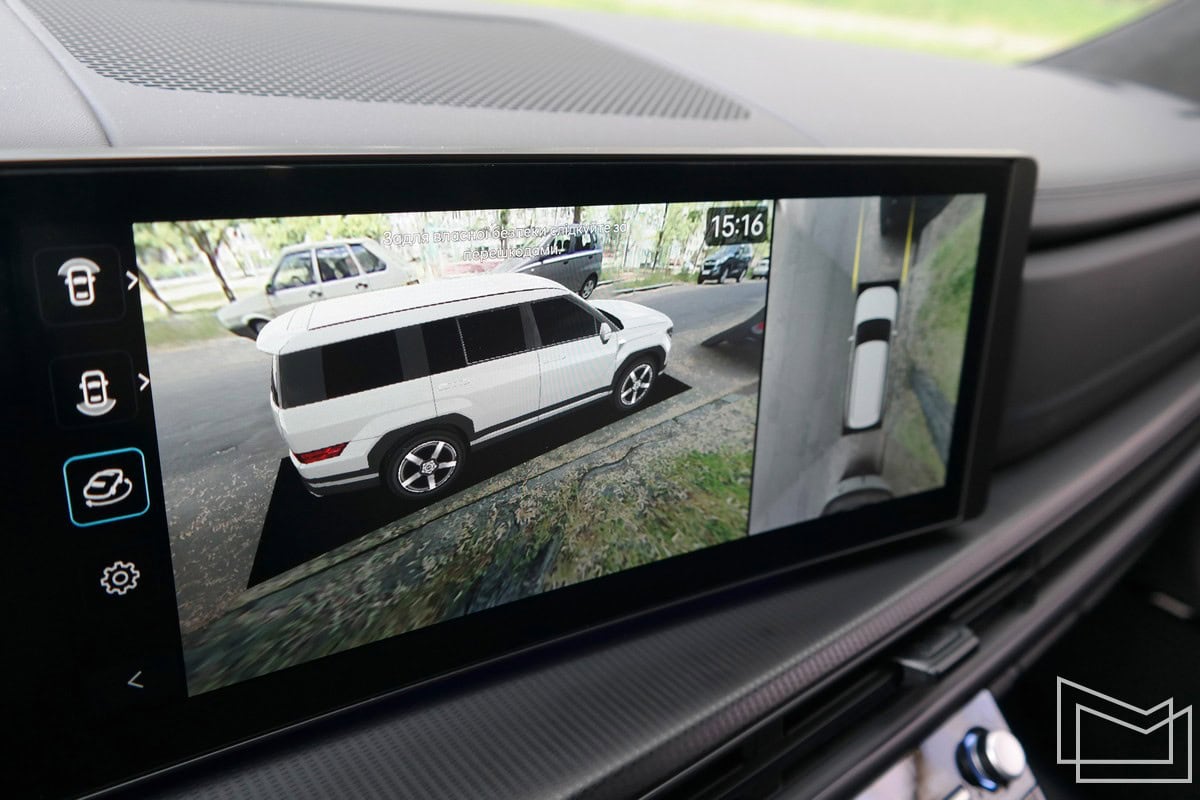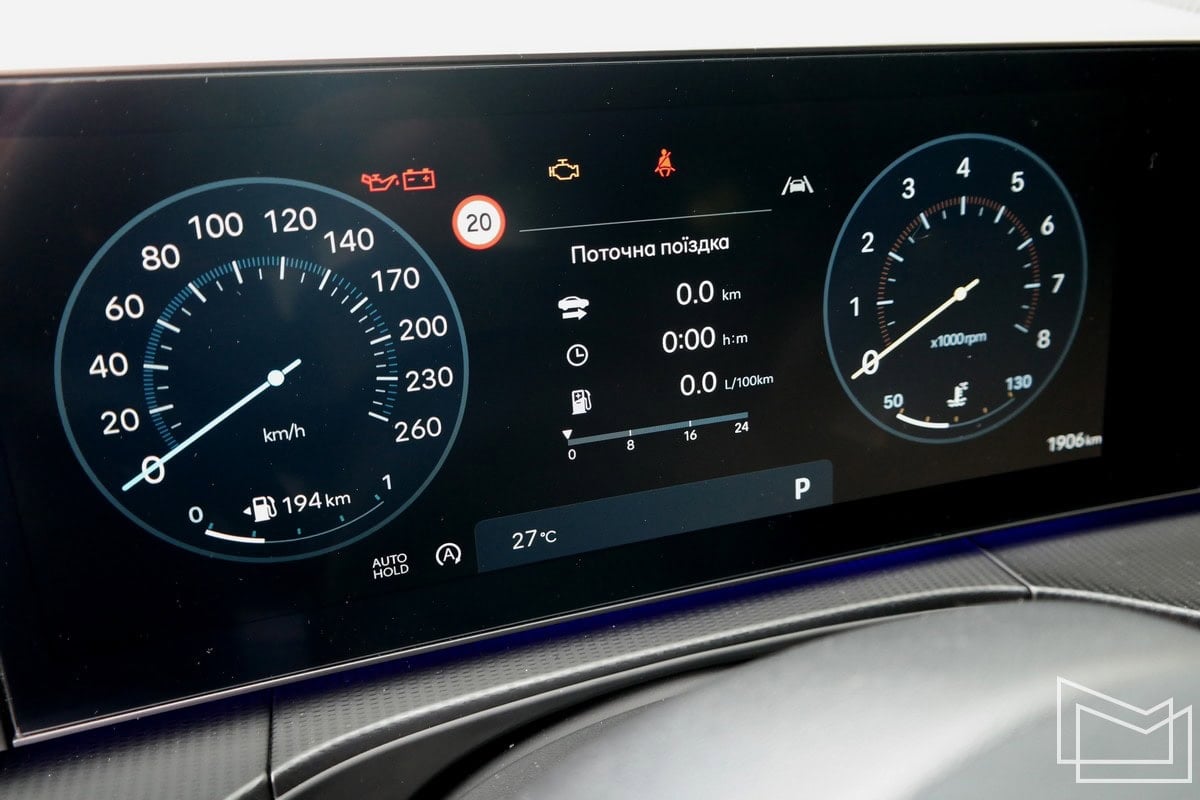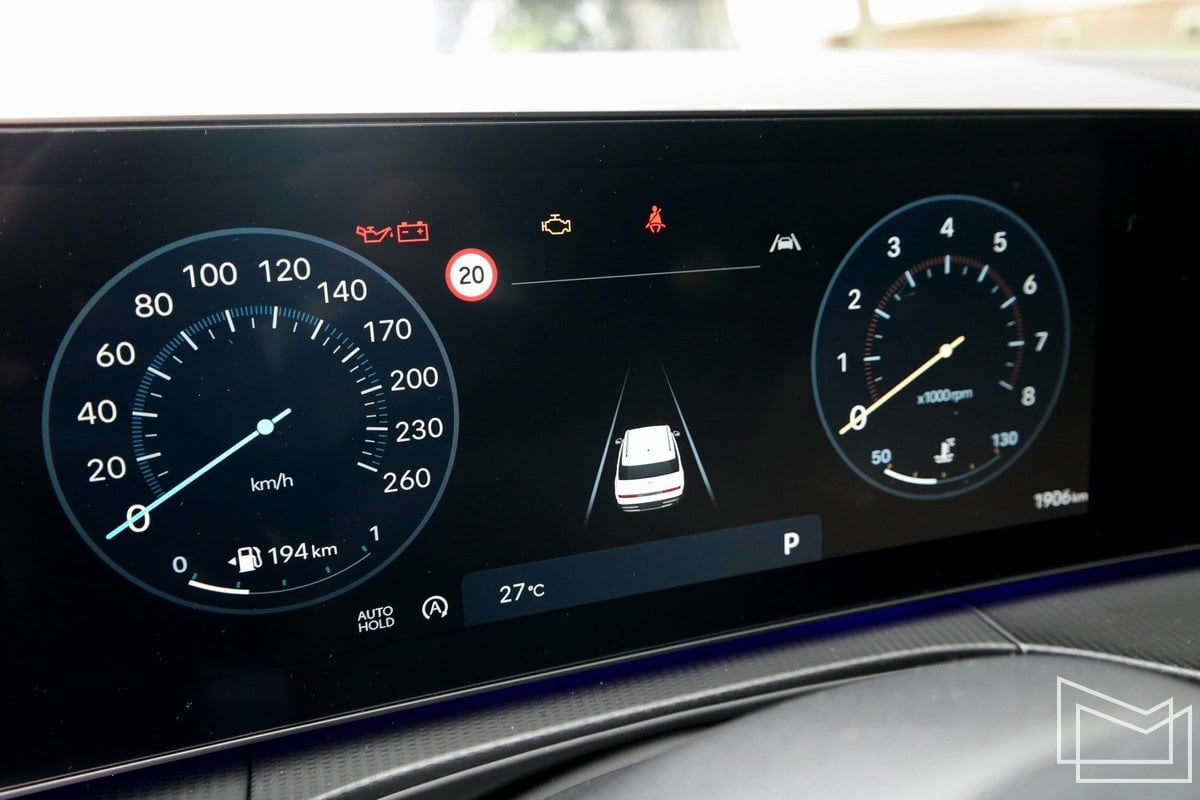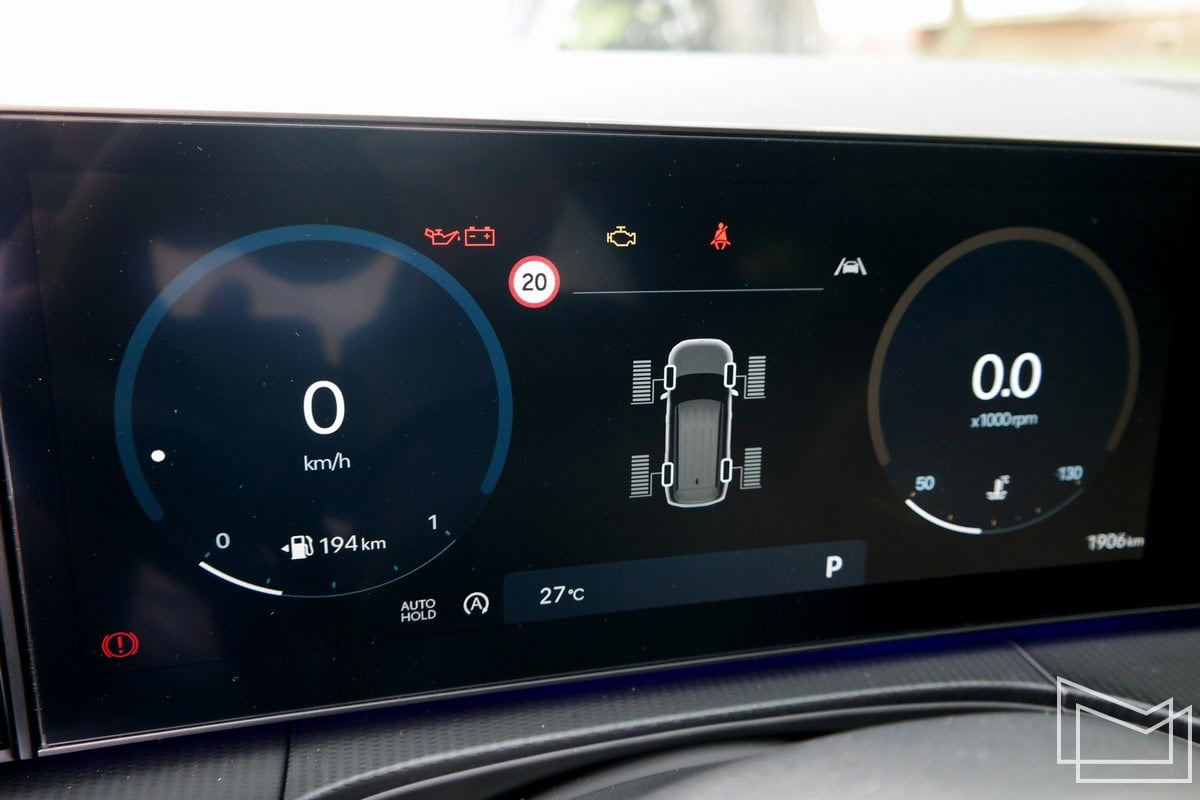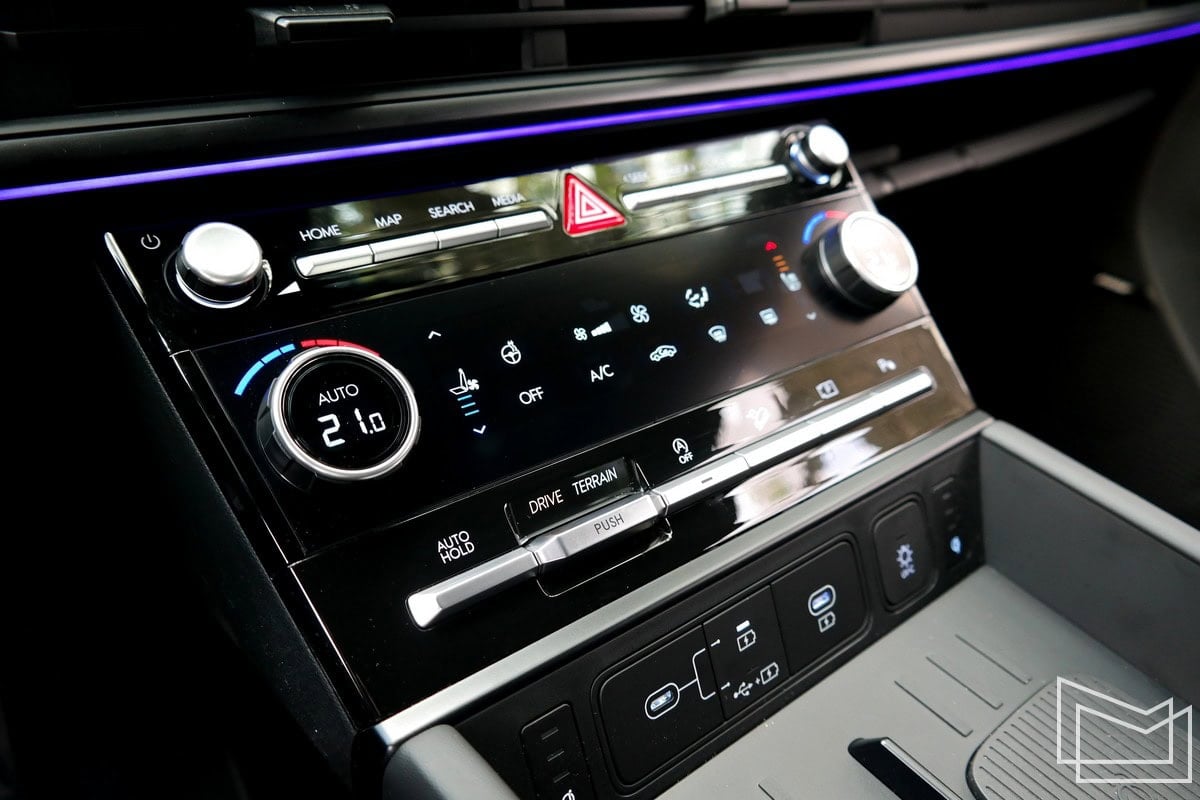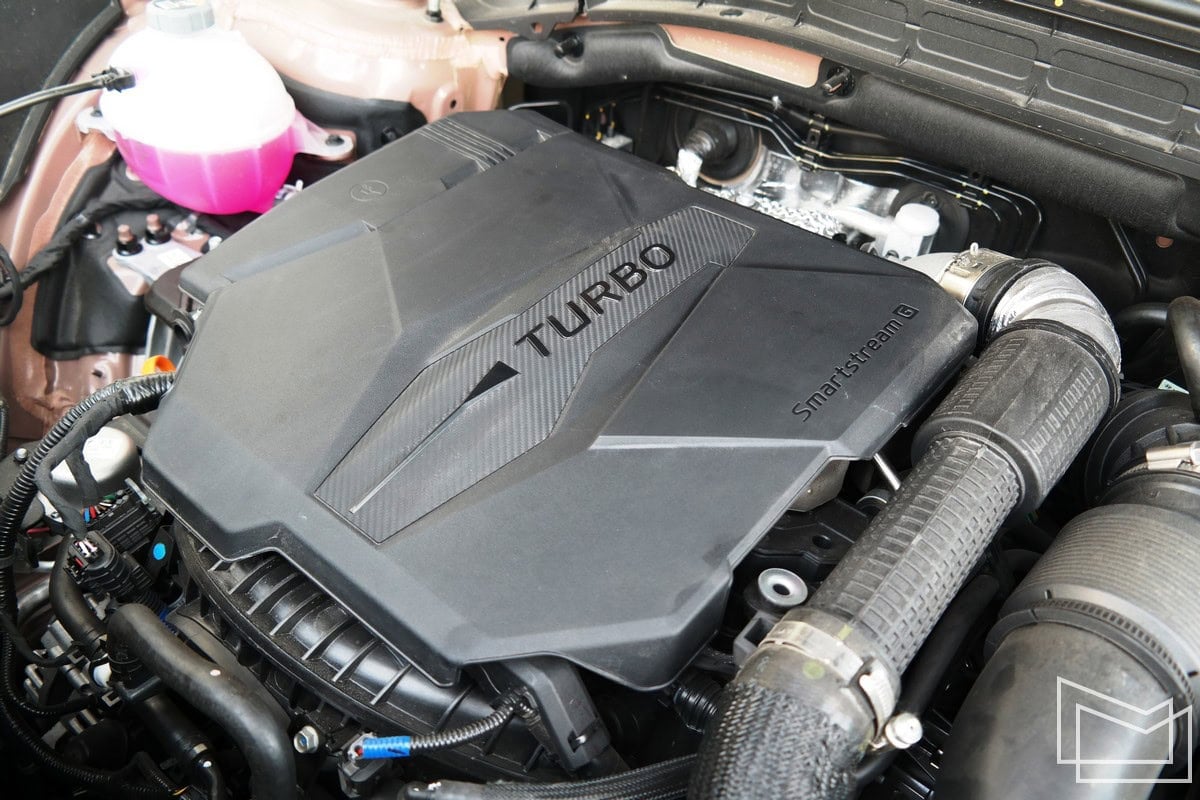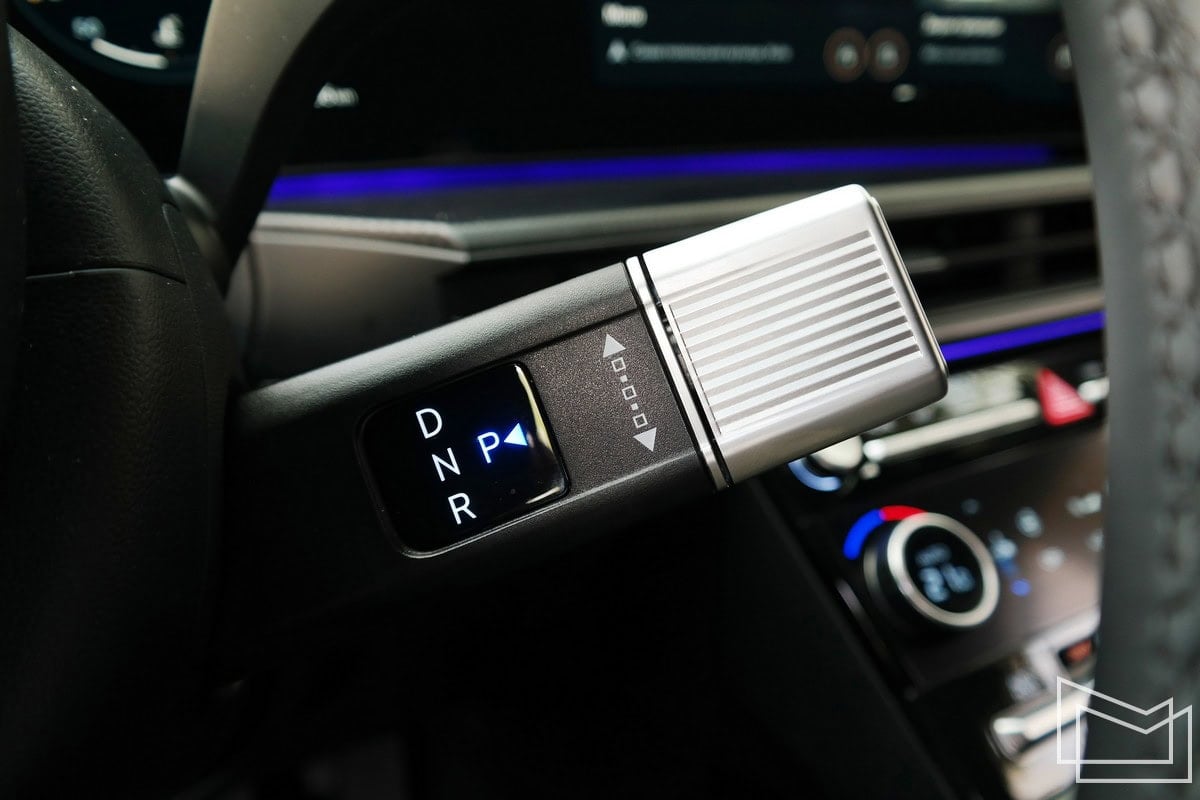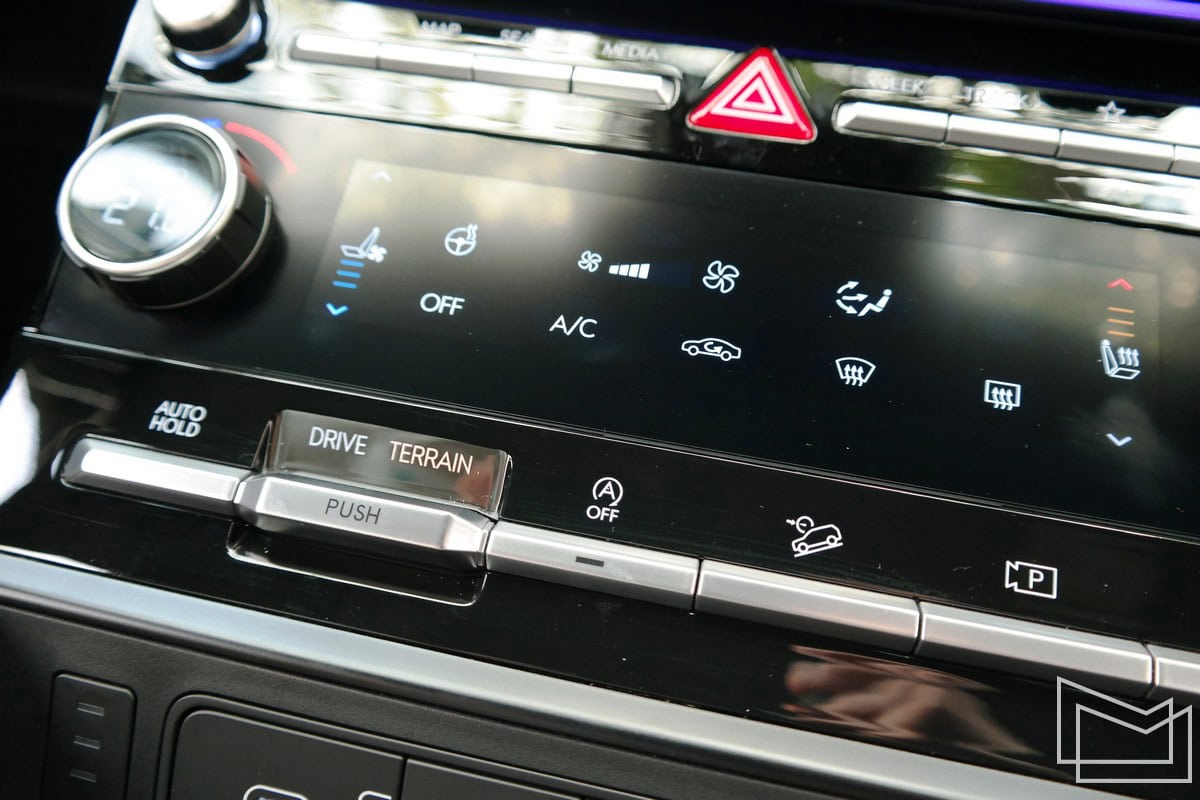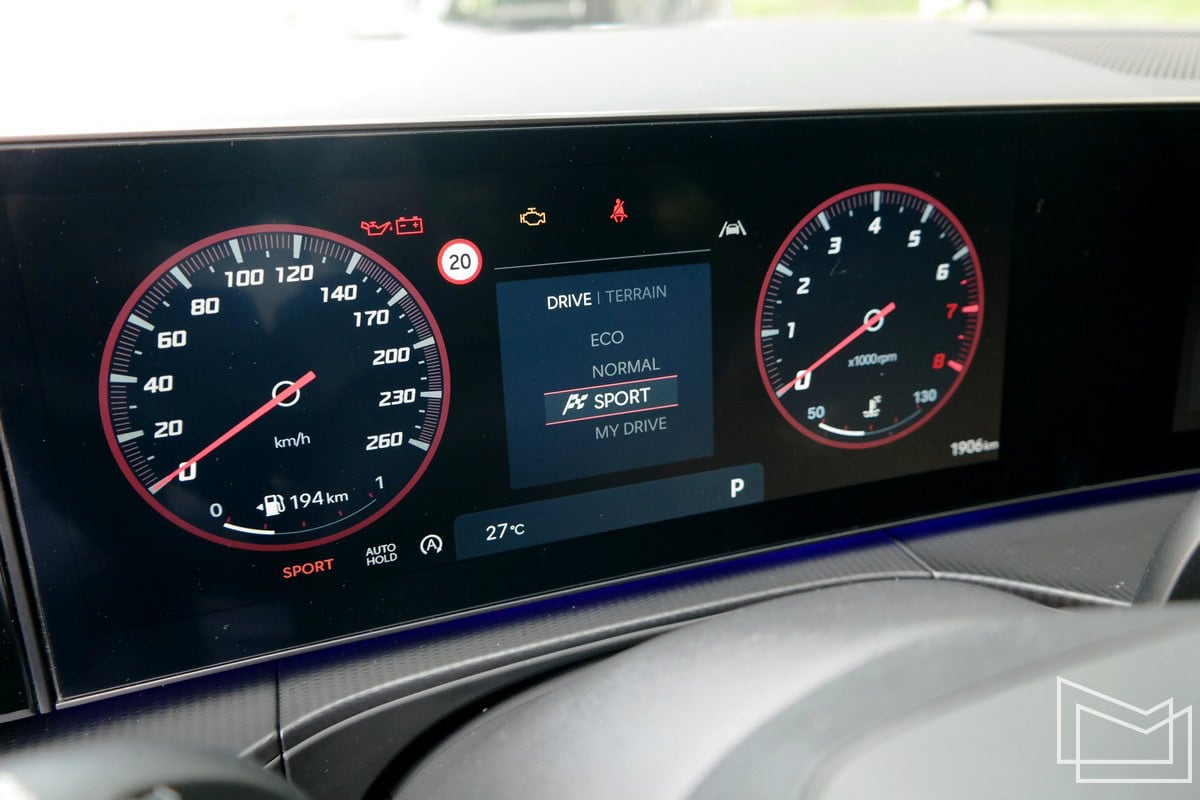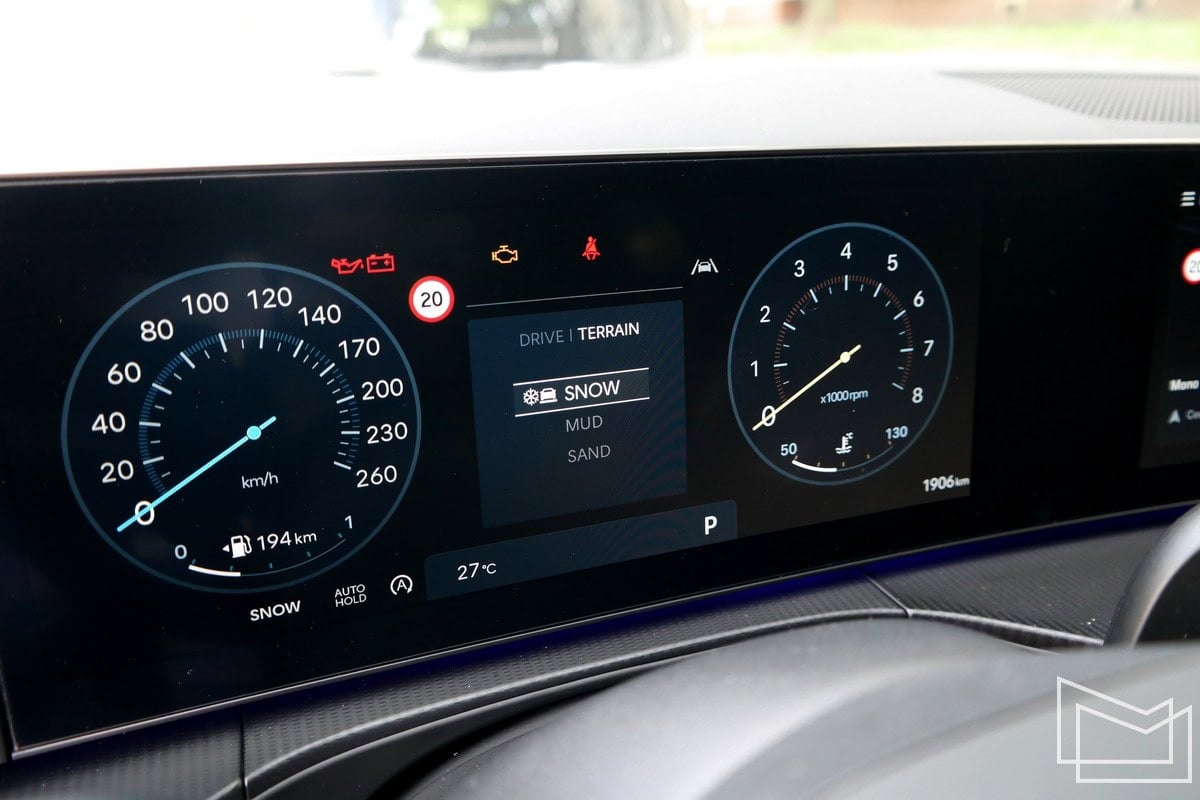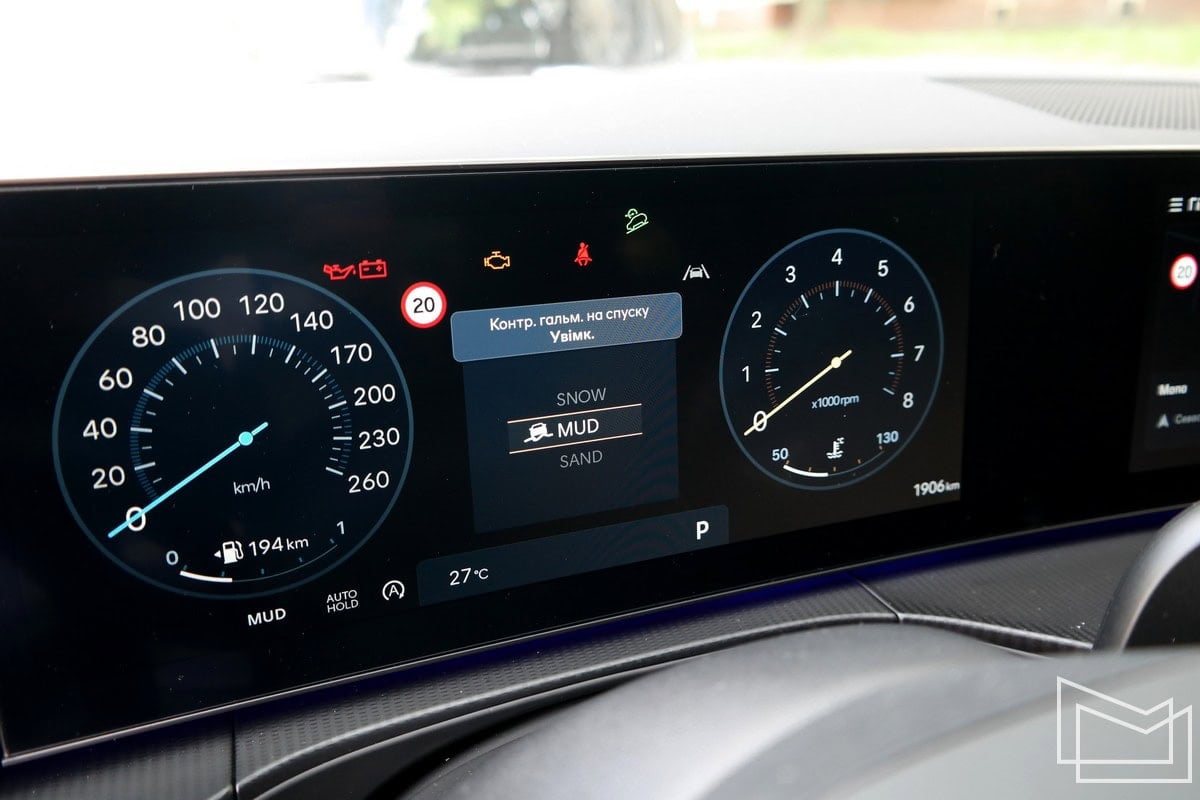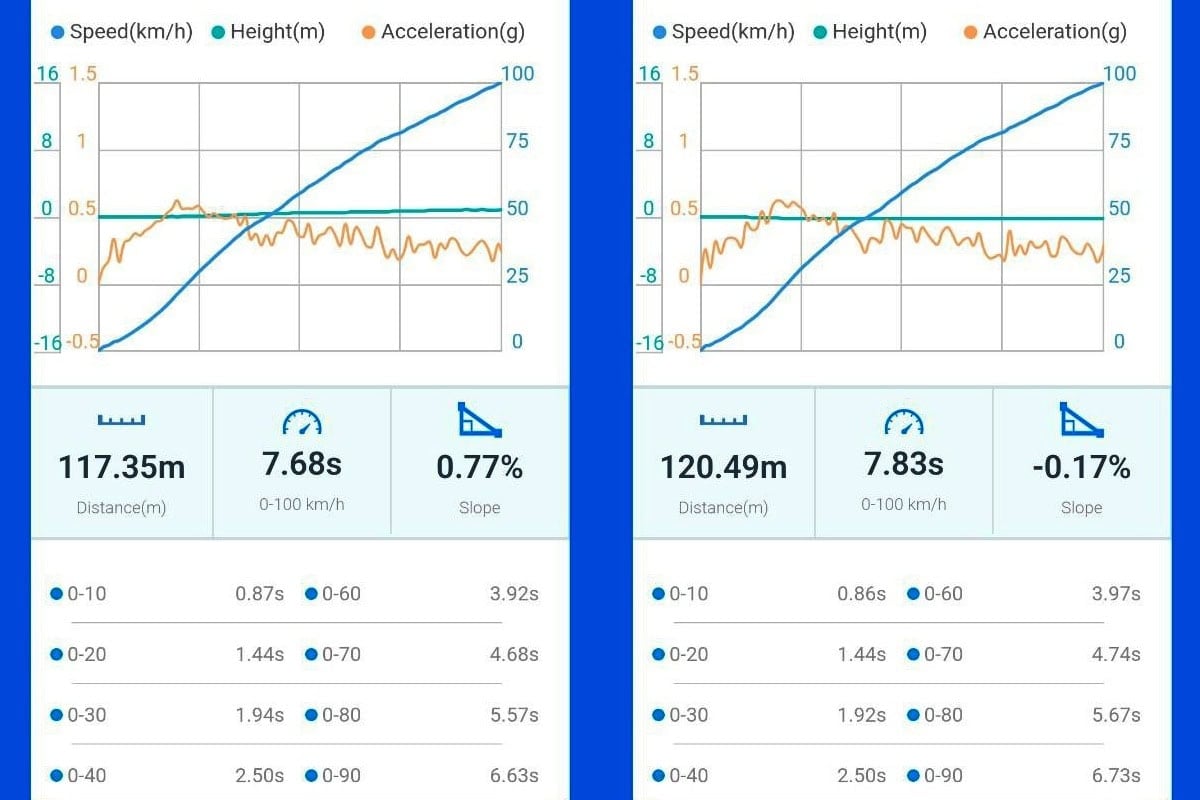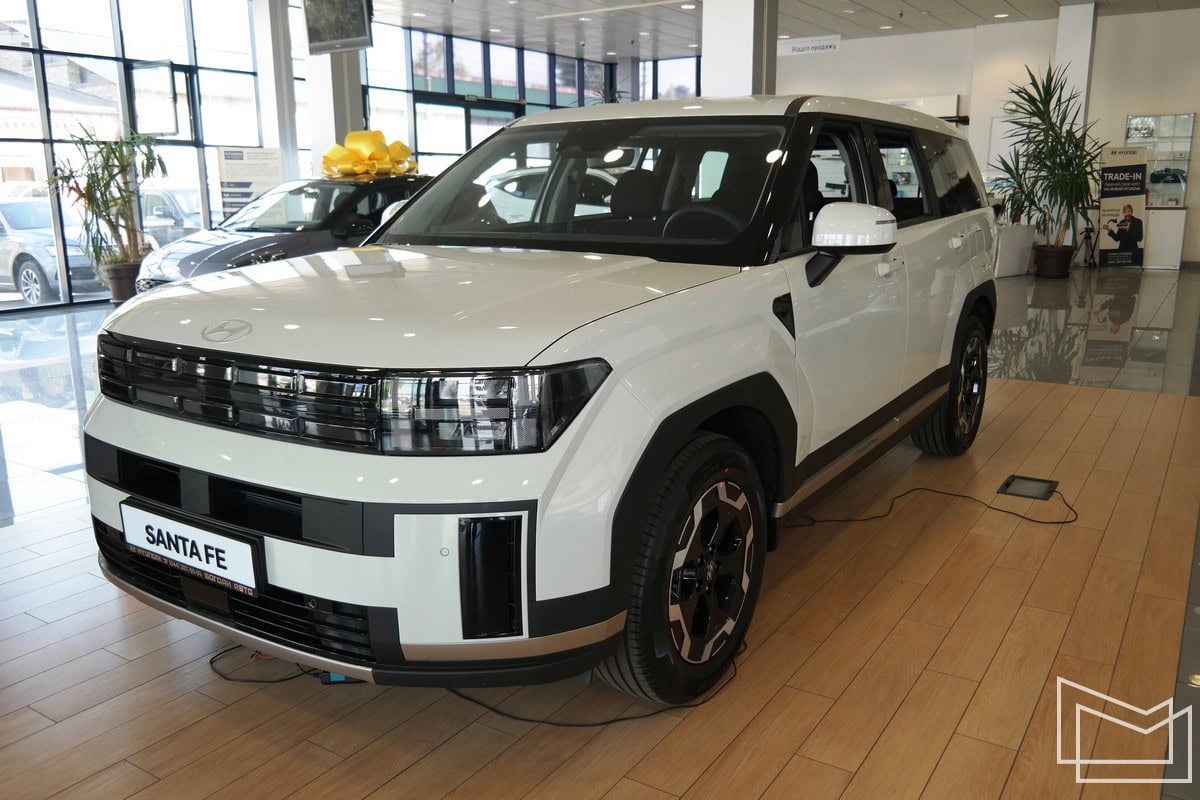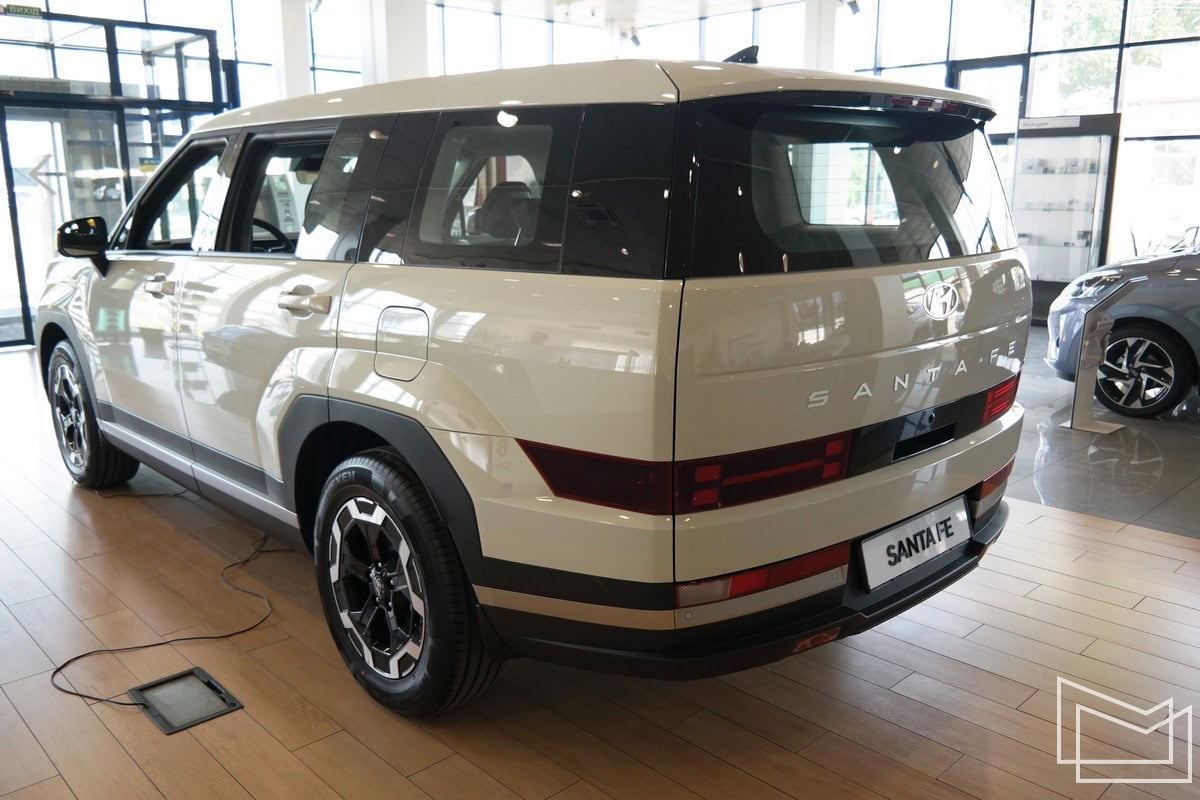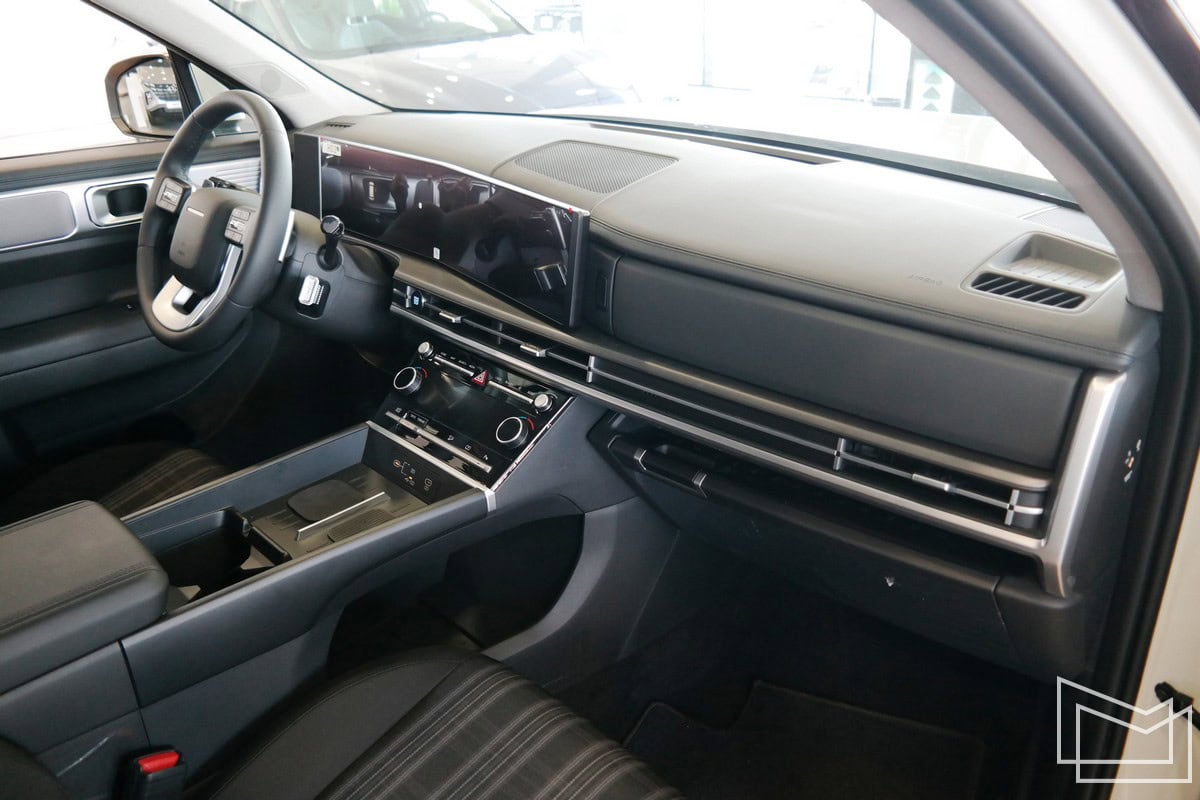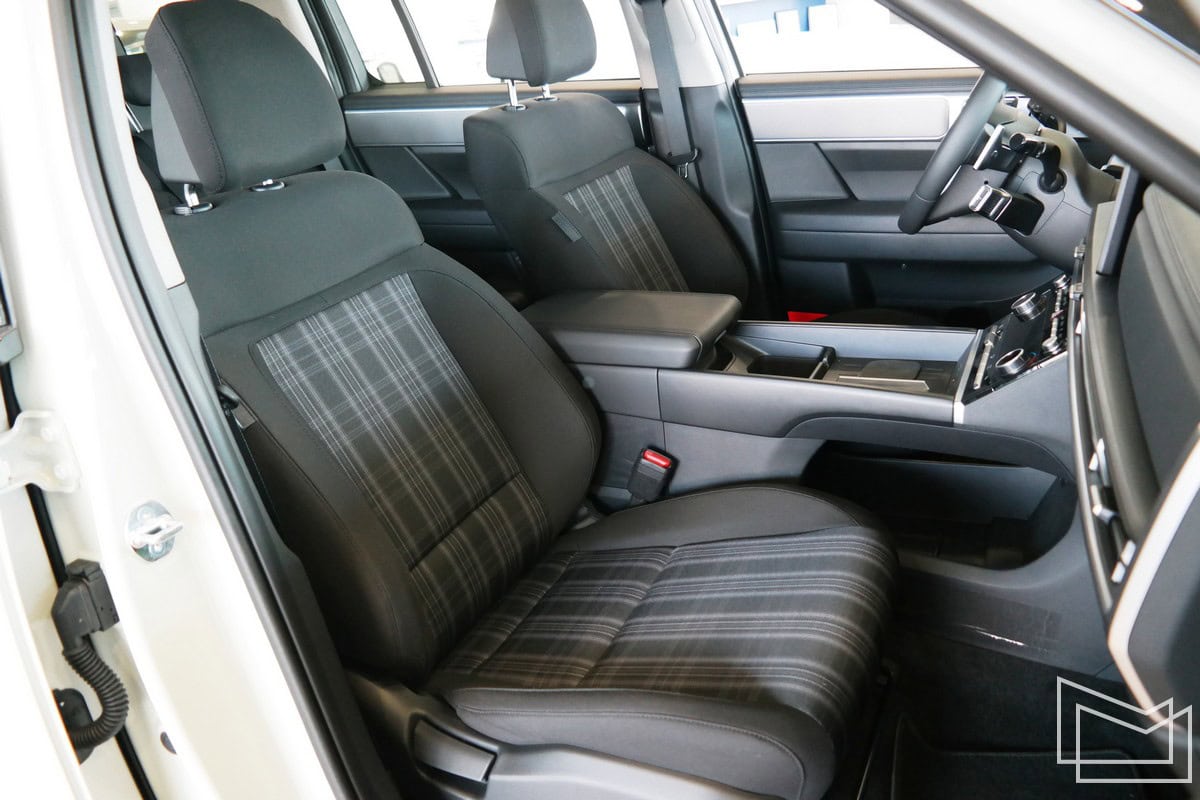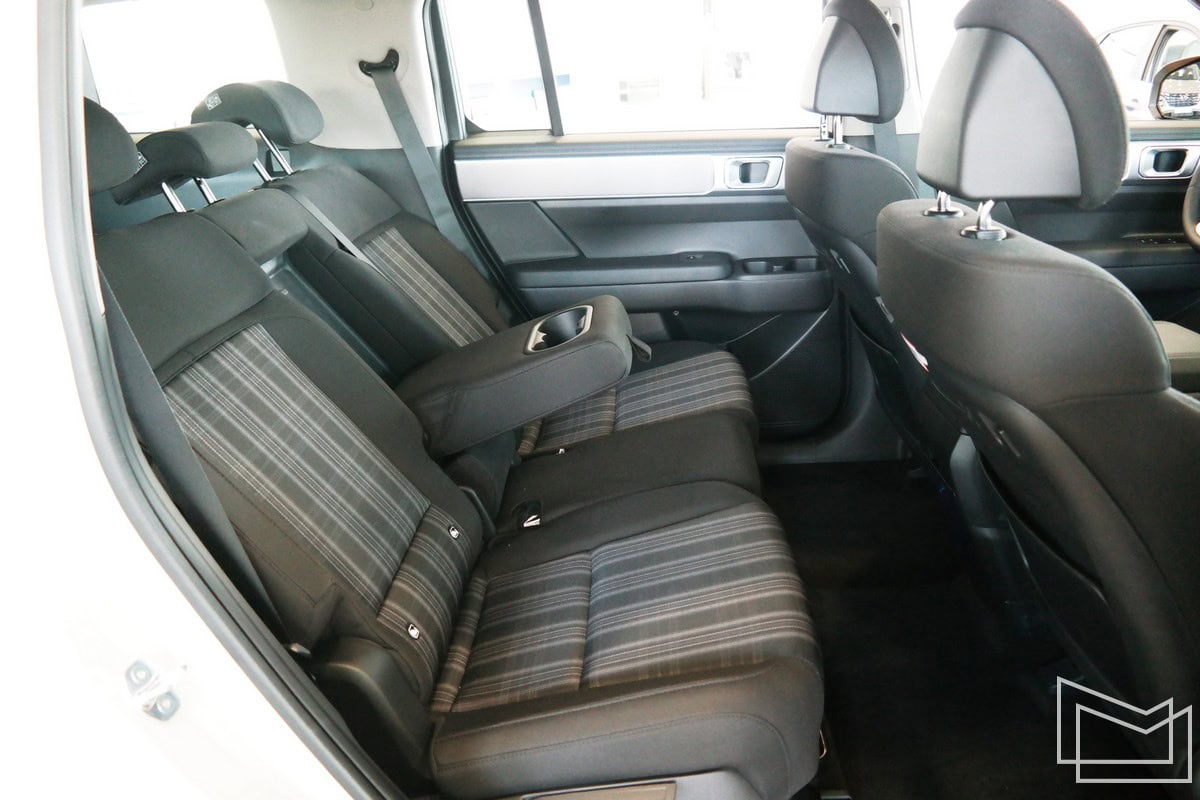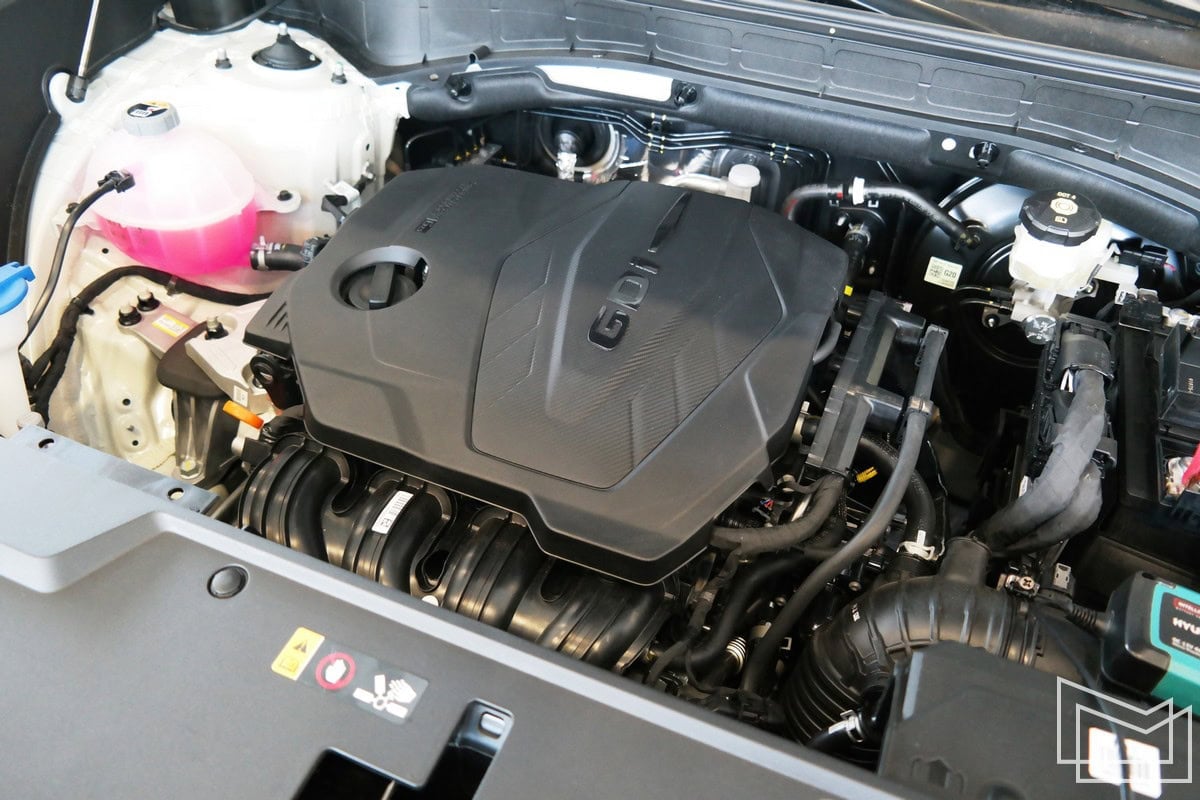So, the crossover Hyundai Santa Fe has not only been announced, but has already arrived in Ukraine! With its brutal design, very spacious and interesting interior, powerful turbo engine... Stop, I won't reveal all the features of the new car. After all, a detailed description of them and your own impressions of the test drive will require a lot of material. This is exactly what you will find below.
Design: what does this giant look like?
Dear readers, I read your comments under my own articles very carefully. I noticed several references comparing the new Hyundai Santa Fe to the Ford Flex. I have heard the opinion that the rectilinear shapes of the Hyundai Santa Fe and the trapezoidal wheel arches resemble the Mercedes G-Class. I agree with these opinions and even add my own - to me, the Hyundai Santa Fe crossover is similar to Land Rover cars: either the current Defender or the past Discovery...
We can argue about the similarities between the different models for a long time, but what is unequivocal and unquestionable is the sense of the car's considerable size: the length exceeds 4.8 meters, the width reaches 1.9 meters - and all these dimensions are especially felt through this design with almost straight lines. The flat side surfaces, for example, mean that this almost 2-meter width does not only exist at the edge of the convex wheel arches, but also rises up to the roof of the car.
I would also like to note that this design is functional. There's a small niche with a lid on the rear roof pillar, which is actually a handle that helps a person hold on when lifting: for example, when you need to install a luggage box on the roof, put something in or take something out of it, etc. Or pay attention to the front of the body: the active louvers of the radiator grille are one of the complex elements of the carefully crafted aerodynamics that allowed us to achieve Cd=0.294 even with such a straightforward shape. Or here's another example: the two-section LED headlights draw the branded letter H, reminiscent of the company's logo. A similar pattern appears on the lights mounted on the trunk lid. However, there are a few comments to be made here. For example, the headlights look very modern, but they are not matrix, meaning that they do not control the beam of light and do not "cut out" other cars. Or here's another thing: the low-lying H-lamps could be explained by the desire to lower the trunk lid level as much as possible to make loading easier; but when you open the lid, you see a rather high threshold.
An interesting story: the new fifth-generation Hyundai Santa Fe crossover (code MX5) has many hints of various models, but in general, the original image is obtained - it can not be confused with other cars! Including its predecessors: all of them significantly changed the design with each new generation, and also constantly added in size. The new Hyundai Santa Fe MX5 did the same, reaching new records of its own: length - 4.83 meters; width - 1.9 meters; height - 1.77 meters; wheelbase - 2.815 meters. There is no official data on ground clearance for the Ukrainian version, but based on the information we found, we can count on 17 centimeters. The design is not only original, but also functional: the rear roof pillar hides the handle, active louvers (need a mesh!) improve cooling and aerodynamics, and a camera for a digital interior mirror is mounted in the trunk lid spoiler. A dark chrome grille, black 21-inch wheels and black gloss body cladding are features of the Calligraphy package..
This package is largely decisive for the perception of the interior, because it is Calligraphy that determines the presence of NAPPA leather with branded H-logo embroidery in the headlights, folding front seats, and even an ultraviolet sterilizer! The first two items have already been seen on other Hyundai cars, although they have not become less attractive. But the sterilizer compartment can be another +1 point that tips the scales in favor of the Hyundai Santa Fe for those people who care about the maximum sterility of their personal belongings.
However, if all this is removed from the Hyundai Santa Fe interior, what will remain? In general, quite a lot. The architecture of the front panel is built around two combined 12.3-inch horizontal displays, decorative stripes again form an H-shaped element, the automatic transmission joystick is located under the steering wheel, and the wide center console provides a separate climate control unit and goes into a niche for two phones - logically, with a pair of wireless chargers. In addition, the Hyundai Santa Fe interior has a memorable steering wheel with a massive center section and wide spokes and a flat front door sill: you can even install the window buttons there! Do you get the hint?
Finally, the interior of the Hyundai Santa Fe is memorable for its space. It's not so noticeable in the front - you look at the dashboard, switch the climate control, put your phone on charge, etc. - but in the rear, there is an incredible sense of space, as if you were in a large hall with high ceilings. It's all thanks to the aforementioned flat side surfaces of the body: it works not only outside but also inside. Plus, there is a lot of legroom and a huge margin of width, the rear sofa slides forward/backward and allows you to choose the angle of the backrest, there are window blinds and ventilation deflectors, and the rear passengers have their own panoramic glass roof. However, this roof can only be controlled from the front seats - for some reason, we regretted the additional button in the back. We also regretted the separate climate control for the second row, which is already found in this class.
Let's consider the additional niches located at the end of the center console - just in place of the climate control unit - as compensation. Firstly, there is a separate retractable niche for rear passengers; secondly, the armrest can be opened on both sides, which gives convenient access to its contents as in the front. The 3-stage heated rear seats and convenient rear access can also be called compensation: even if the door opening angle is not a record, the huge size of the door solves the problem.
The interior of the fifth-generation Hyundai Santa Fe is a recognizable Hyundai design with a horizontal display, a wide center console, folding seats and premium leather, as well as a few unexpected "nice little things" like a sterilizer or a fingerprint sensor for automatic driver profile detection. Behind the wheel, the comfort of the seat and the feeling of incredible space, especially above the head, are memorable. By the way: potentially, the new Hyundai Santa Fe can be not only a 5-seater, but also a 7-seater, as hinted at by the large triple niche (which should be occupied by additional seats). But while we are dealing with the 5-seater version, we are dealing with a well-organized and very large 725-liter trunk.
Equipment: powerful "turbo" and "automatic robot"
The new Hyundai Santa Fe MX5 crossover is built on the basis of a load-bearing body, has fully independent wheel suspensions, and is available with transversely mounted 4-cylinder engines, as well as front or all-wheel drive. In general, the design is standard for vehicles of this class. But, as is often the case with generational changes, it has been improved here and refined there. For example, the new Hyundai Santa Fe received SDC3 (Selective Dumping Control) frequency-adaptive shock absorbers, hydraulic subframe support bushings, and even a larger muffler (now 22 liters versus 20 liters before) and more soundproofing materials - all to achieve better driving comfort. The new crossover features a body with an increased proportion of high-strength steels and an aluminum beam in the front - this is for better safety and handling, as well as lighter weight. Finally, the new Hyundai Santa Fe has advanced Hyundai SmartSense safety systems: lane keeping and centering control, emergency braking in the event of a frontal collision or when making a left turn, monitoring of cross traffic, etc.
Plus, the new ccNC system includes a pair of 12.3-inch combined displays - one of them is used as a dashboard, the other allows you to control all the additional functions of the car. And here it is worth mentioning the recent review of the Hyundai Sonata, where a similar concept was used; the similarity is further emphasized by the identical climate control unit: rings-washers for temperature selection and touch-sensitive buttons-switches for everything else. The only difference is that in the sedan, you look at these displays almost horizontally, but the crossover offers a wider angle - a tangible "top-down" view.
We can also mention the 194-horsepower 2.5 GDI gasoline engine paired with a classic 8-speed automatic: this combination is also available for the Hyundai Santa Fe crossover, only with the option of choosing the type of drive - front or all-wheel drive. However, what makes the new Hyundai Santa Fe special is its powerful 281-horsepower 2.5 T-GDI gasoline turbo engine (code G4K III) paired with a robotic 8-speed DCT transmission (code D8LF1) with dual clutch. This variant of the Hyundai Santa Fe is offered only with all-wheel drive.
The test car Hyundai Santa Fe was presented in the most powerful version - the gasoline 4-cylinder turbo engine SmartstreamG 2.5 T-GDI produces 281 hp (5800 rpm) of power and 422 Nm (1700-4000 rpm) of torque: a lot! But the car itself is not light - together with the obligatory 8-speed "robot automatic" and all-wheel drive, this version of the Hyundai Santa Fe weighs 2,155 kg. Acceleration from 0-100 km/h is promised in 7.8 seconds, and the top speed is declared at 210 km/h; accurate official data on fuel consumption in the versions for Ukraine have not yet been presented. The other powertrain option for the Hyundai Santa Fe is an atmospheric 2.5-liter gasoline engine paired with a classic automatic, which reminds us of the Hyundai Sonata sedan; similarly, the concept of two combined displays and a touchscreen climate control unit.
Behind the wheel: good dynamics and good comfort
The newest turbo engine lives up to its promise and delivers on all its promises! From just 1,500-2,000 rpm, it smoothly delivers quite a bit of torque, which translates into good acceleration. No peaks and jerks, no need for high revs: torque, power, and good traction are present in a very wide range. At the same time, the "robot automatic" changes gears as quickly and imperceptibly as possible. I do not exclude that the feeling of such an unbroken flow of traction is largely due to the DCT box. But pay attention to the following nuance: during measurements of maximum dynamics, the best result was shown when starting with one pedal, not two (when there was a noticeable pause). It seems that the transmission saves clutch at the beginning of the movement and, if necessary, starts from high revs. This can be important not only during dynamic starts, but also when digging off-road: in sand, mud, snow. Therefore, if you need to frequently overcome sections of slippery off-road, it may be better to pay attention to the version with a classic automatic; although, on the other hand, there will be no such concern.
After all, with the accelerator pedal fully depressed, the Hyundai Santa Fe crossover demonstrates good dynamics. It seems to lose half of its weight and pleasantly impresses with its agility: is it possible that the speedometer readings change so quickly? Moreover, only in such acceleration modes does the engine reach 5-6 thousand revolutions, and the sound of its operation can be heard in the cabin. Up to this point, silence reigns inside the Hyundai Santa Fe: the sound of the engine is barely noticeable, there are few aerodynamic noises, and a minimum of sounds from the tires and suspension. The latter is memorable not only for its quiet operation, but also for its good comfort and soft ride, even with 21-inch wheels. And I would also say that the suspension works very "cleanly": after overcoming a series of bumps, you do not feel any unnecessary jolts or vibrations. Only rolls are present.
The new Hyundai Santa Fe seems to offer many driving modes that can change its character. However, in sport mode, these same cornering cues still do not disappear, and the steering wheel with medium sharpness (2.5 turns from stop to stop) becomes heavier and already stands out against the background of the overall light and soft character of the car; but in ECO mode, the reactions of the engine and gearbox become too weak. So it turns out that the optimal driving mode is normal or your own: with sporty-dynamic engine and transmission settings, but with a pleasantly light steering wheel. Anyway, in a car like the Hyundai Santa Fe, there is no great desire to drive fast in the corners, but you can accelerate well in a straight line a couple of times! The story is similar with the off-road modes: in any case, they involve more active clamping of the friction clutch and all-wheel drive, plus in MUD mode, the downhill assist system is additionally activated.
The gasoline turbo engine leaves a pleasant impression with its power and traction capabilities, and the robotic box leaves a pleasant impression with its smoothness and speed of shifts. The car offers many driving modes, but in general, the character of the Hyundai Santa Fe crossover is unchanged - it's all about comfort! And a few own observations for the final: acceleration from 0-100 km/h is 7.7-7.8 seconds; fuel consumption in the city averages 12 liters per 100 km; plus or minus 1-1.5 liters are possible depending on driving conditions (traffic jams or empty roads) and driving style; on the highway at a speed of about 100 km/h - fuel consumption is 7-7.5 liters per 100 km. Hybrid versions of the Hyundai Santa and Fe could potentially reduce fuel consumption, but they are not currently available on the Ukrainian market, and the issue is still being considered. What is already represented in Ukraine? Read more...
Cost: how much does Hyundai Santa Fe cost and who are the competitors
Currently, the Hyundai Santa Fe MX5 is offered for the Ukrainian market only with gasoline engines and in 5-seat versions - no hybrid versions or 7-seat saloon are listed in the price list. However, there is a choice between two engines (2.5 GDI 194 or 2.5 T-GDI 281) and two transmissions (8AT or 8DCT automatic or robotic), front or all-wheel drive, and three trim levels. In total, there are five variants of the car.
The line is opened by the Hyundai Santa Fe crossover in the Dynamic configuration, which offers the following front and side airbags, inflatable curtain airbags, central airbag and driver's knee airbag, stabilization system, lane departure warning and lane keeping assistants, automatic high beam switching, dual-zone climate control adaptive cruise control, rearview camera, power trunk lid, heated front seats and steering wheel, multimedia system with 12.3-inch display, Android Auto and Apple CarPlay support, instrument cluster with 4.2-inch display, LED headlights, textile interior trim, 18-inch alloy wheels, etc. Cost of Hyundai Santa Fe Dynamic 2.5 GDI 194 8AT 2WD – from UAH 1.76 million or $43 thousand; cost of Hyundai Santa Fe Dynamic 2.5 GDI 194 8AT 4WD – from UAH 1.83 million or $44.5 thousand; cost of Hyundai Santa Fe Dynamic 2.5 T-GDI 281 8DCT 4WD – from UAH 1.96 million or $48 thousand.
The next step is the Hyundai Santa Fe in the Elegance configuration, which additionally offers: electric driver's seat adjustment, one wireless charger, multi-color interior background lighting, a full-screen digital 12.3-inch instrument panel, eco-leather seats, faux suede ceiling trim, rear window sunshades, 20-inch alloy wheels, etc. Cost of Hyundai Santa Fe Elegance 2.5 T-GDI 281 8DCT 4WD – from UAH 2.1 million or $51 thousand.
The top of the lineup is the Hyundai Santa Fe in Top trim, which features the following collision avoidance assistant when driving in reverse, video monitoring system for mirror blind spots, fingerprint recognition and driver profile detection, information projection on the windshield, surround view system, remote parking assistant, electric steering wheel and passenger seat position adjustment, memory for two seat and mirror positions, front seat ventilation, heated rear seats, 10-speaker BOSE audio, dual wireless charger, projection LED headlights, tinted rear window, laminated front window glass, etc. Cost of Hyundai Santa Fe Top 2.5 T-GDI 281 8DCT 4WD – from UAH 2.32 million or $56.5 thousand.
In addition, two option packages are available for the maximum version of the car. Thus, the Calligraphy package (239 thousand UAH) includes a collision avoidance assistant in the blind spots of mirrors, an ultraviolet sterilizer, NAPPA leather seats and steering wheel, folding front seats Relaxation Seat, exclusive black 21-inch wheels, BLACK HIGH GLOSSY exterior decor, an auxiliary hidden handle for easier access to the roof luggage rack, and more. And the Panorama package (about 49 thousand UAH) means the addition of a power sunroof over the front seats and a separate glass roof over the rear seats, plus an electric sun shade. Thus, the maximum Hyundai Santa Fe Top 2.5 T-GDI 281 8DCT 4WD with Calligraphy Panorama packages (as a test car) can reach a price of about 2.6 million UAH or $63 thousand.
The presented car is a Hyundai Santa Fe in the starting configuration Dynamic: it looks very good, there are expensive wheels and contrasting two-tone bumpers. The interior is greeted by a front panel with digital displays and silver decor. The seats are upholstered in fabric and have mechanical adjustment elements, but the rear row still offers the possibility of adjustment. Under the hood is a 2.5-liter 194-horsepower atmospheric engine - I think it might be a bit underpowered for a large and rather heavy crossover. However, leisurely "classic fans" will definitely like the fact that this engine is paired with a traditional hydromechanical 8-speed automatic transmission. So, even the basic car looks and feels quite good. But it also costs a lot - about $43-45 thousand, depending on the type of drive; and the maximum version of the Hyundai Santa Fe with the Calligraphy and Panorama packages exceeds $63 thousand.
Now let's analyze the competitors, of which there are actually many. After all, the Hyundai Santa Fe crossover occupies an intermediate position between classes, and therefore, under certain conditions, it receives rivals from different classes.
For example, if we are talking about the basic versions of the Hyundai Santa Fe and competition in the price range of $40-45-50 thousand, the rivals are Nissan X-Trail, Honda CR-V, Mitsubishi Outlander. None of these cars offer refined manners on the road, they can hardly compete with the new Hyundai Santa Fe in terms of driving comfort, and they lose in terms of external dimensions and interior space. However, among them you can find 7-seater versions, economical hybrids, good equipment, a lower starting price, etc.
Next, I'd like to mention a couple of Skoda Kodiaq and Mazda CX-60: similar dimensions, similar interclass positioning, plus Skoda Kodiaq also promises a 5- or 7-seater interior. If you add to this the usually comfortable Skoda suspension and a lineup of several engines, you get an almost exact analog competitor, but with a European pedigree. The Mazda CX-60 crossover is almost identical to the Hyundai Santa Fe in terms of power and equipment level, but it is radically different in nature: the emphasis is on dynamic qualities instead of suspension comfort, there is a 6-cylinder engine in the range, but there is only a 5-seater cabin.


